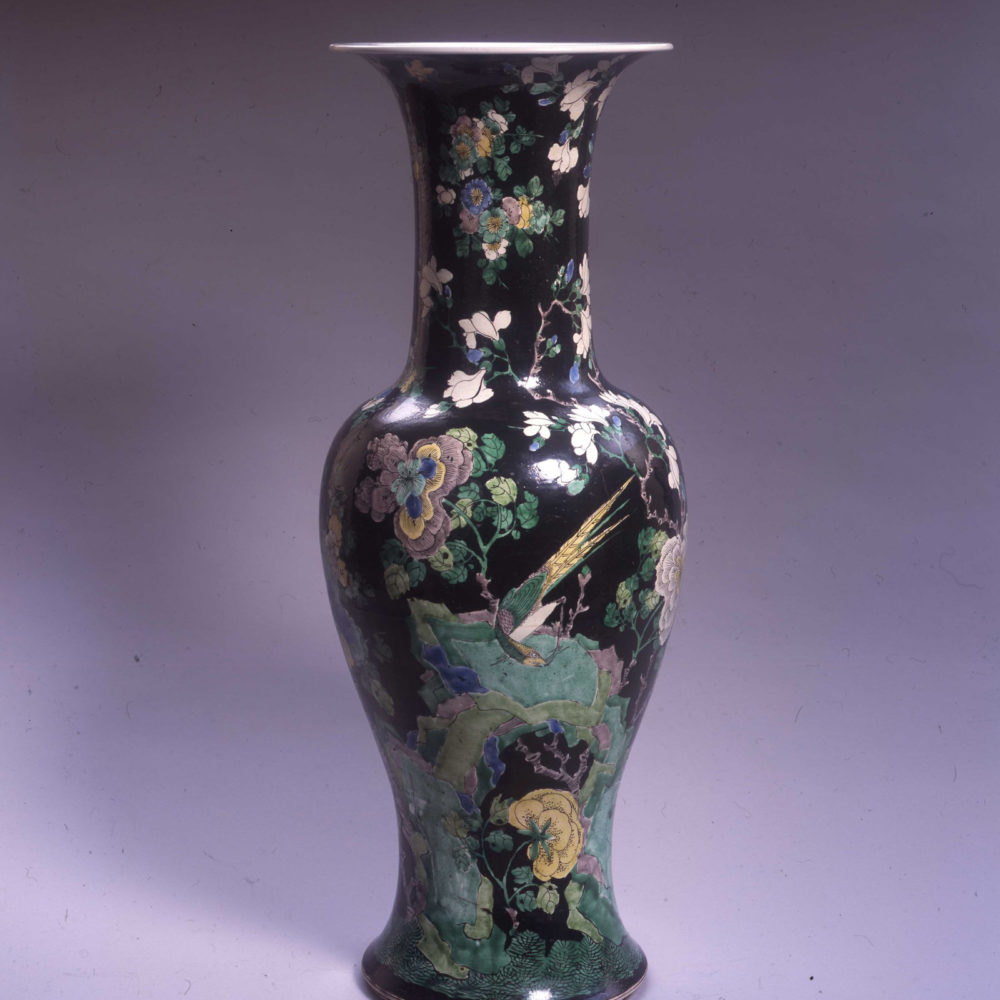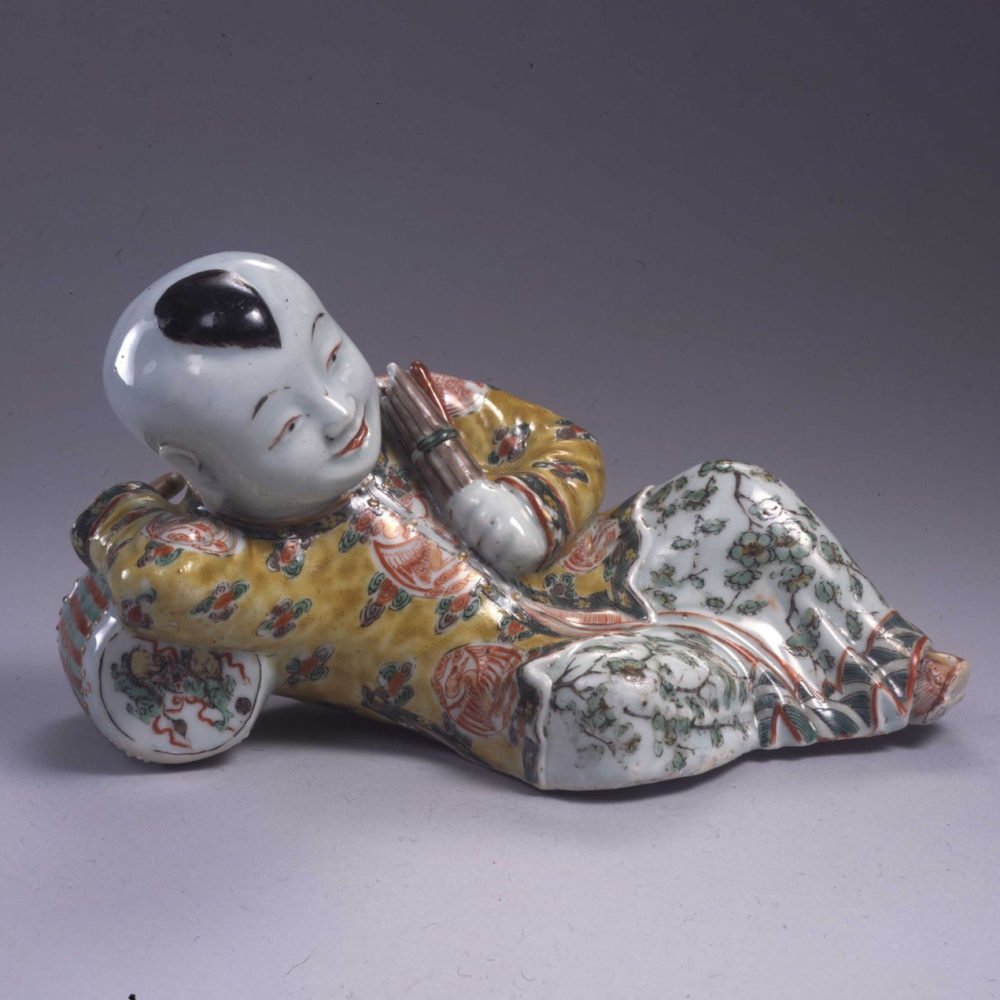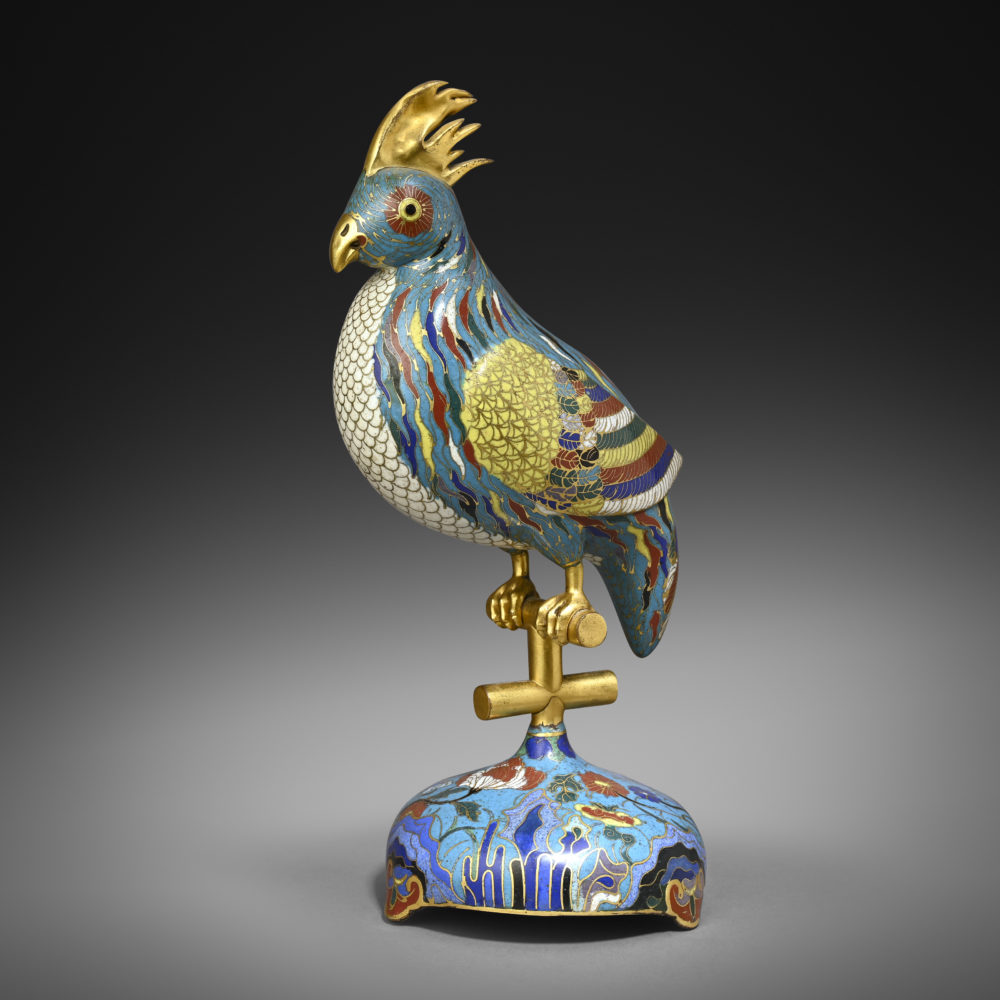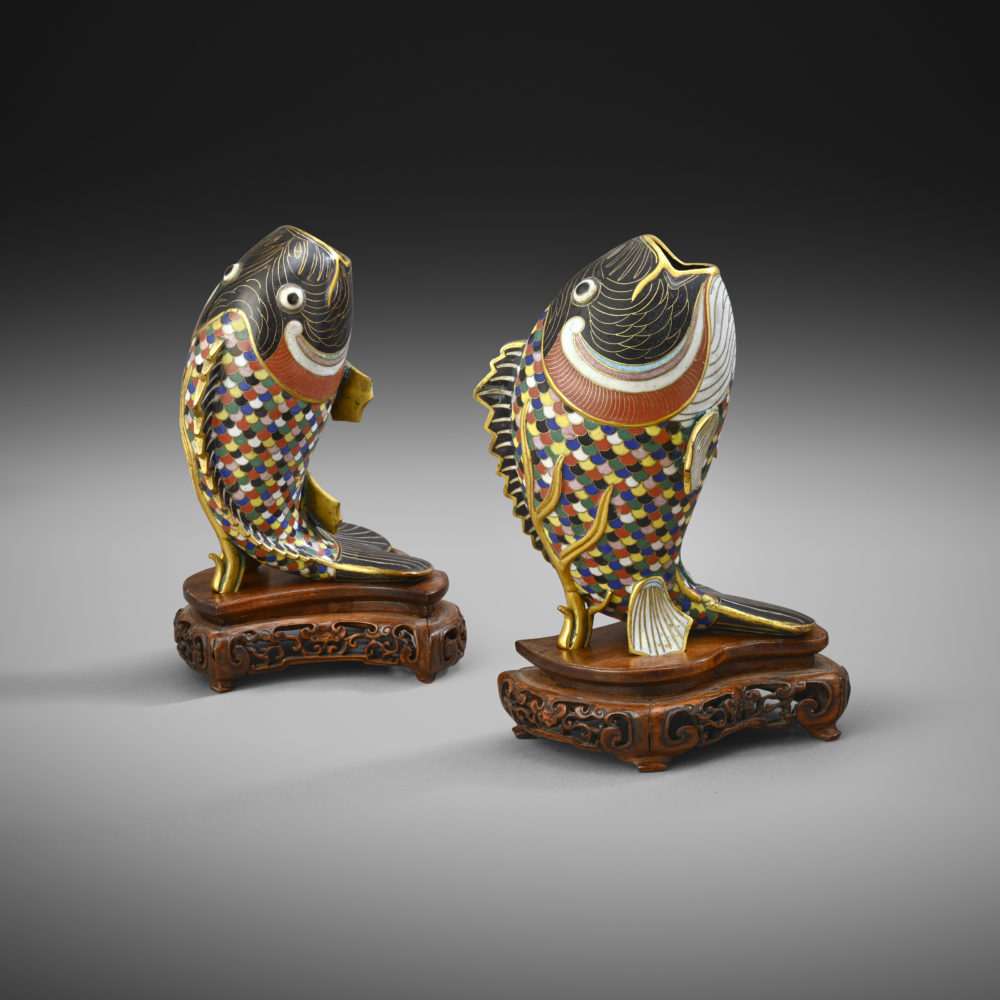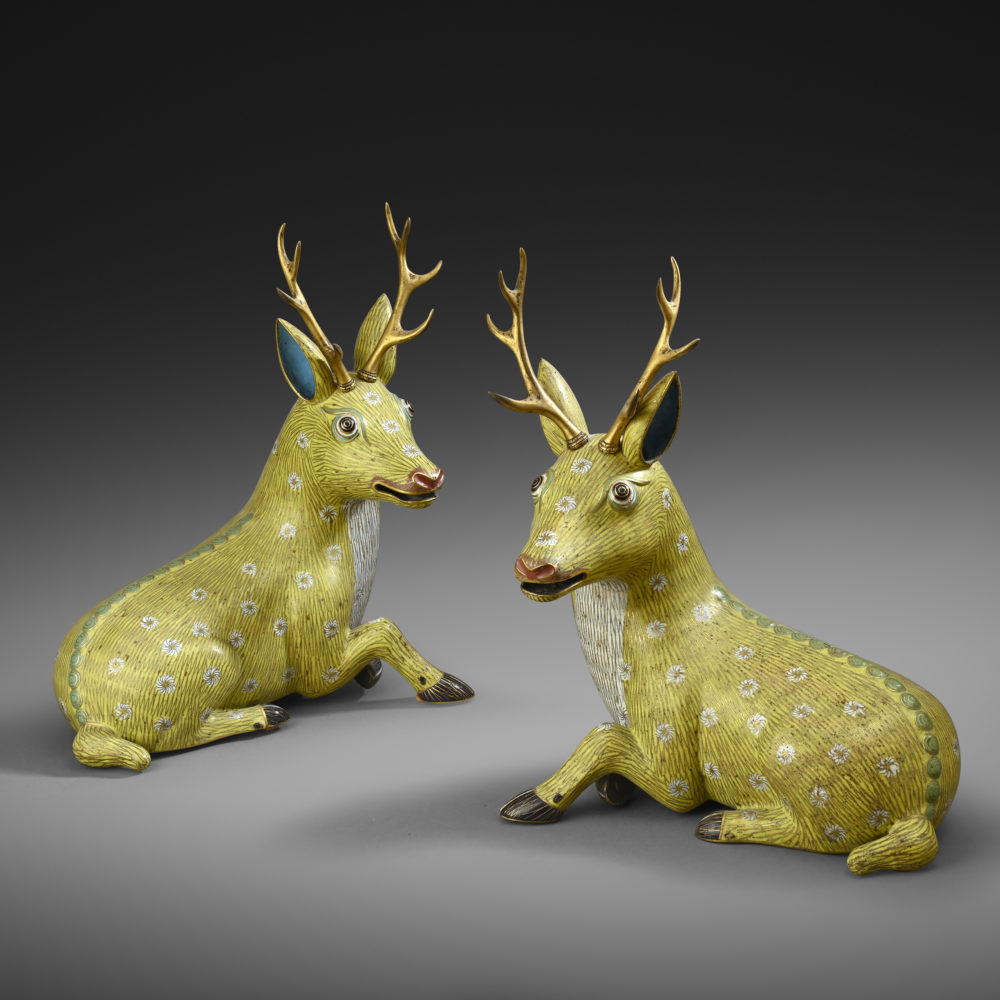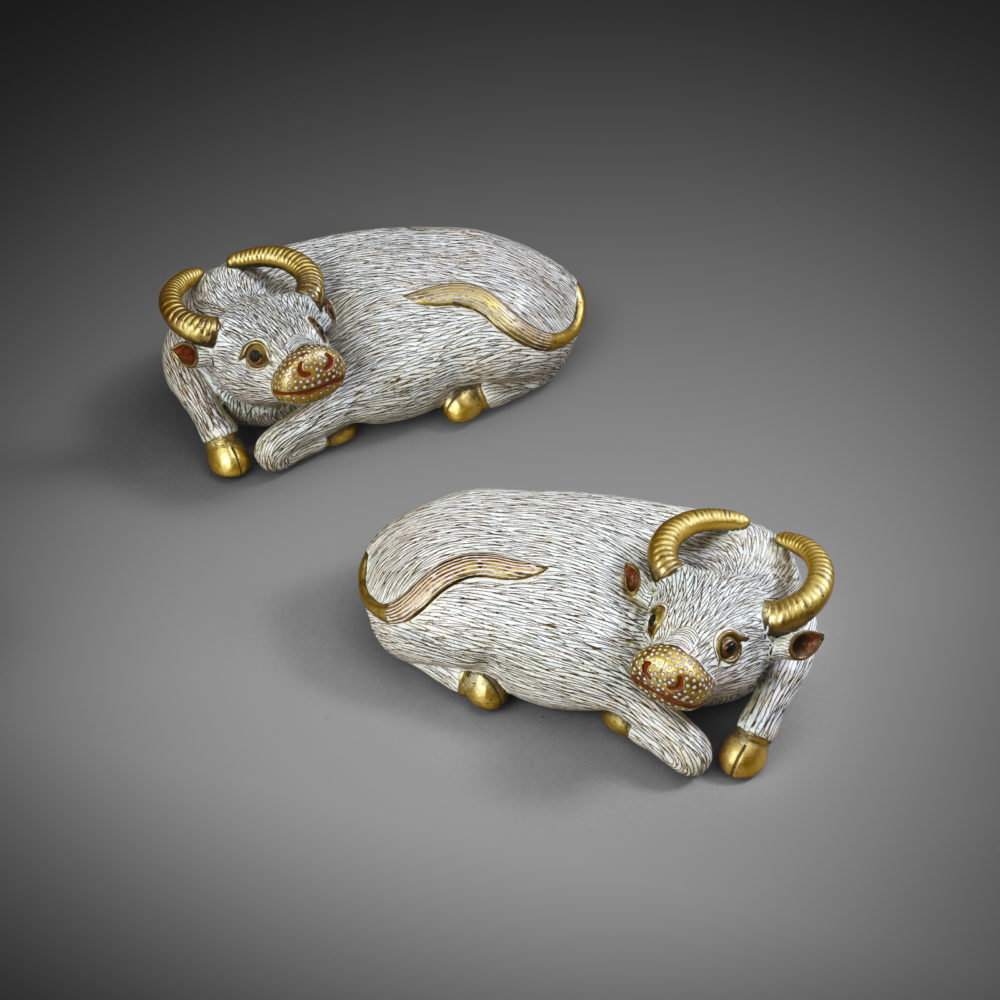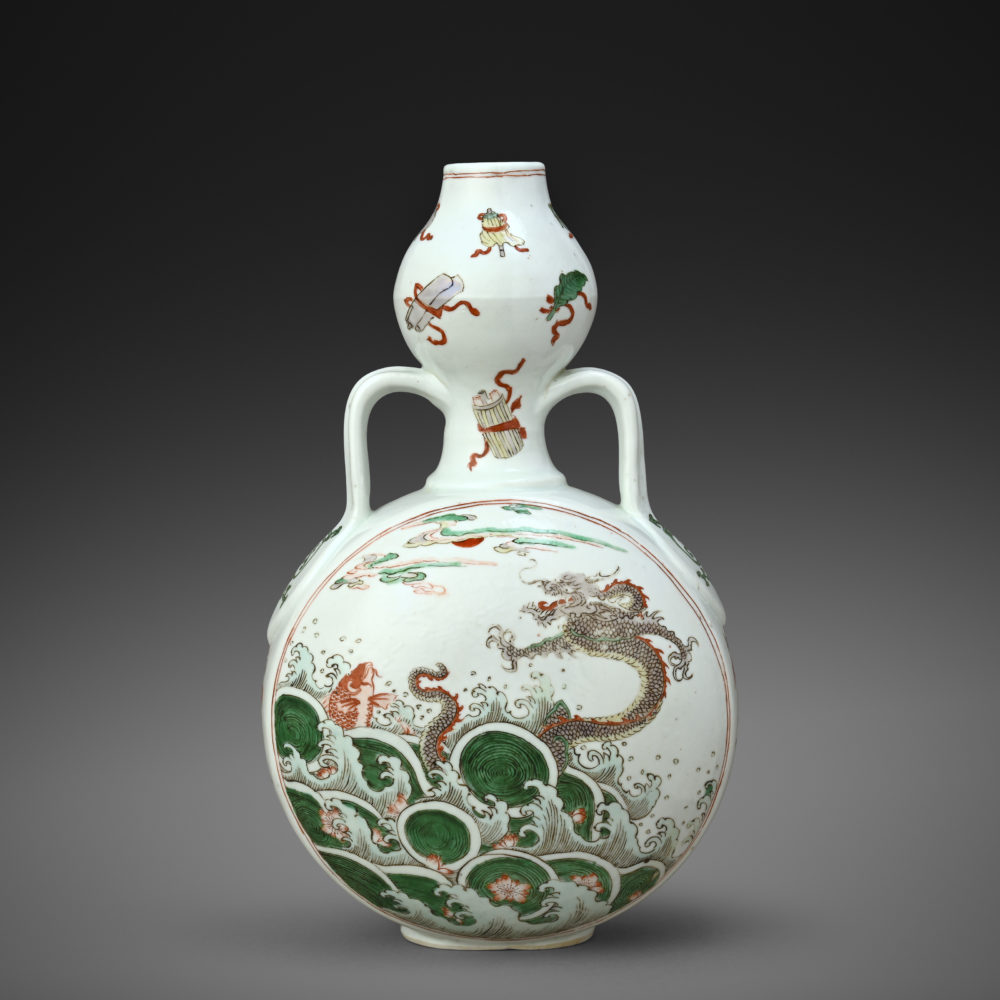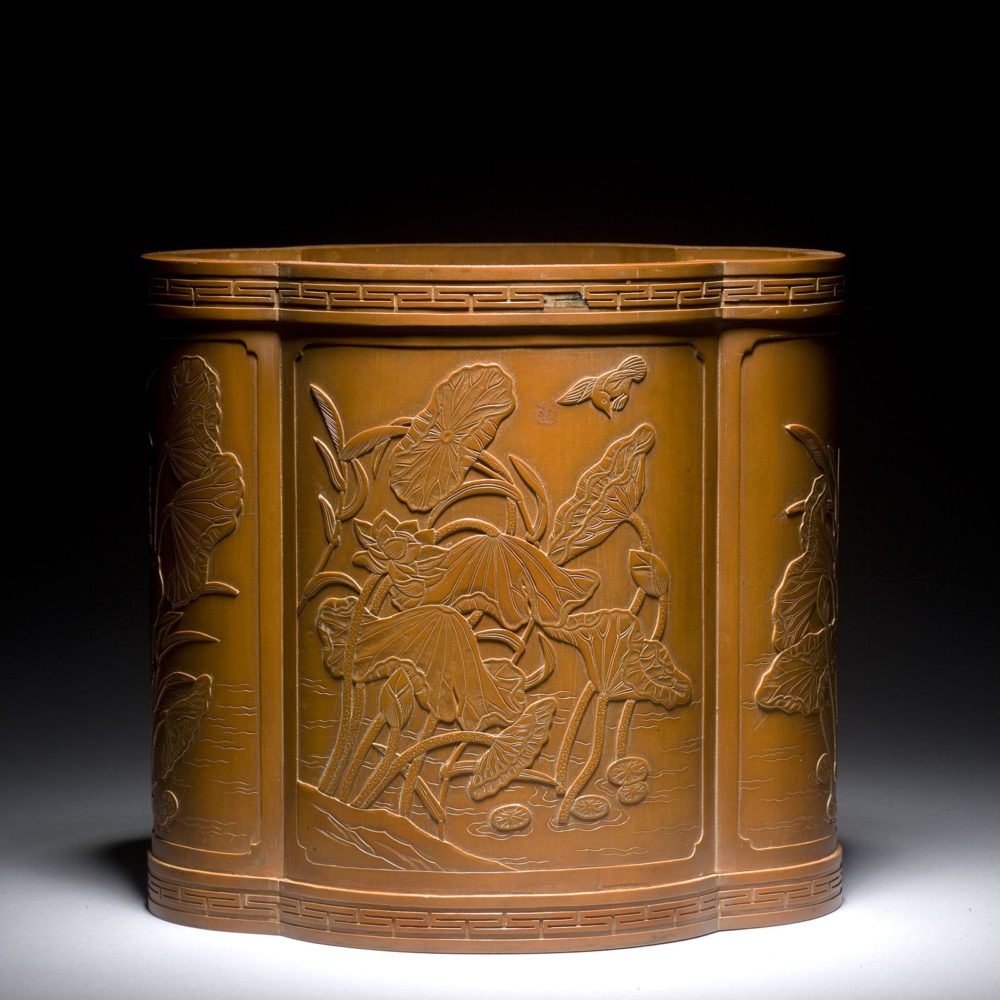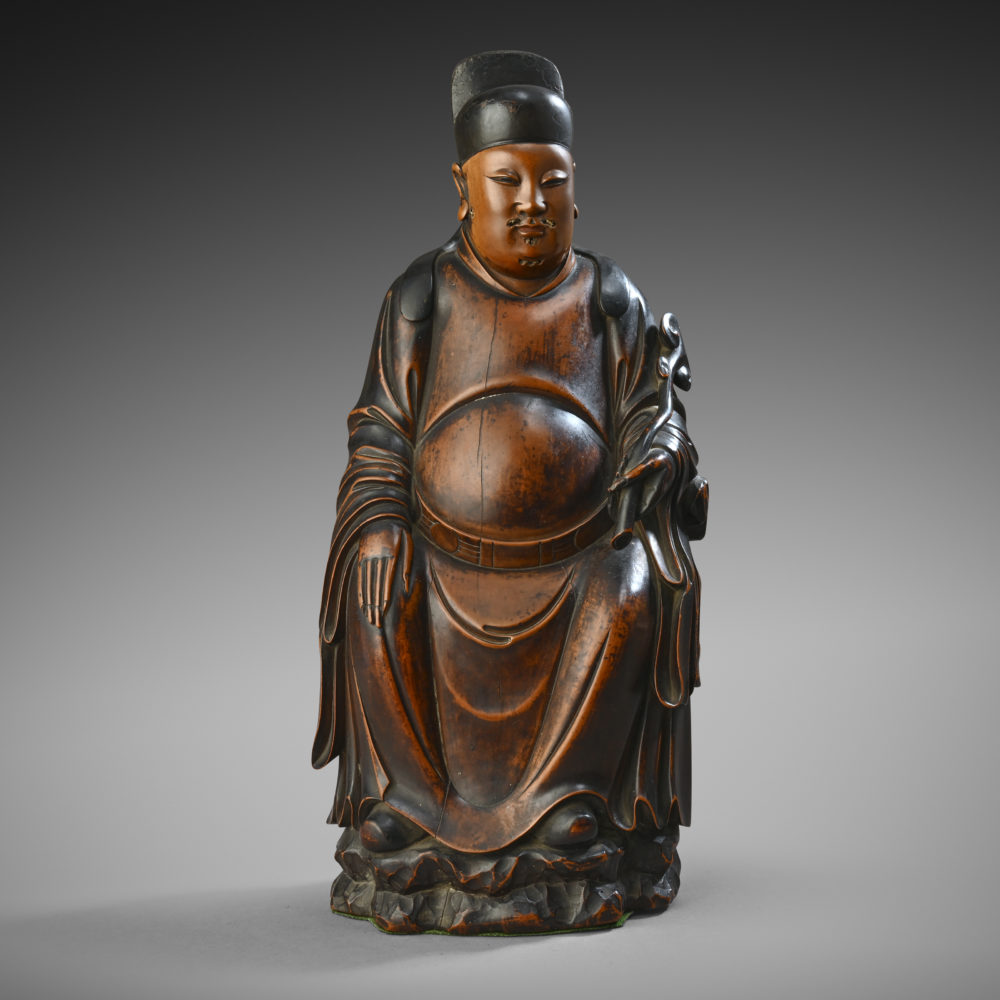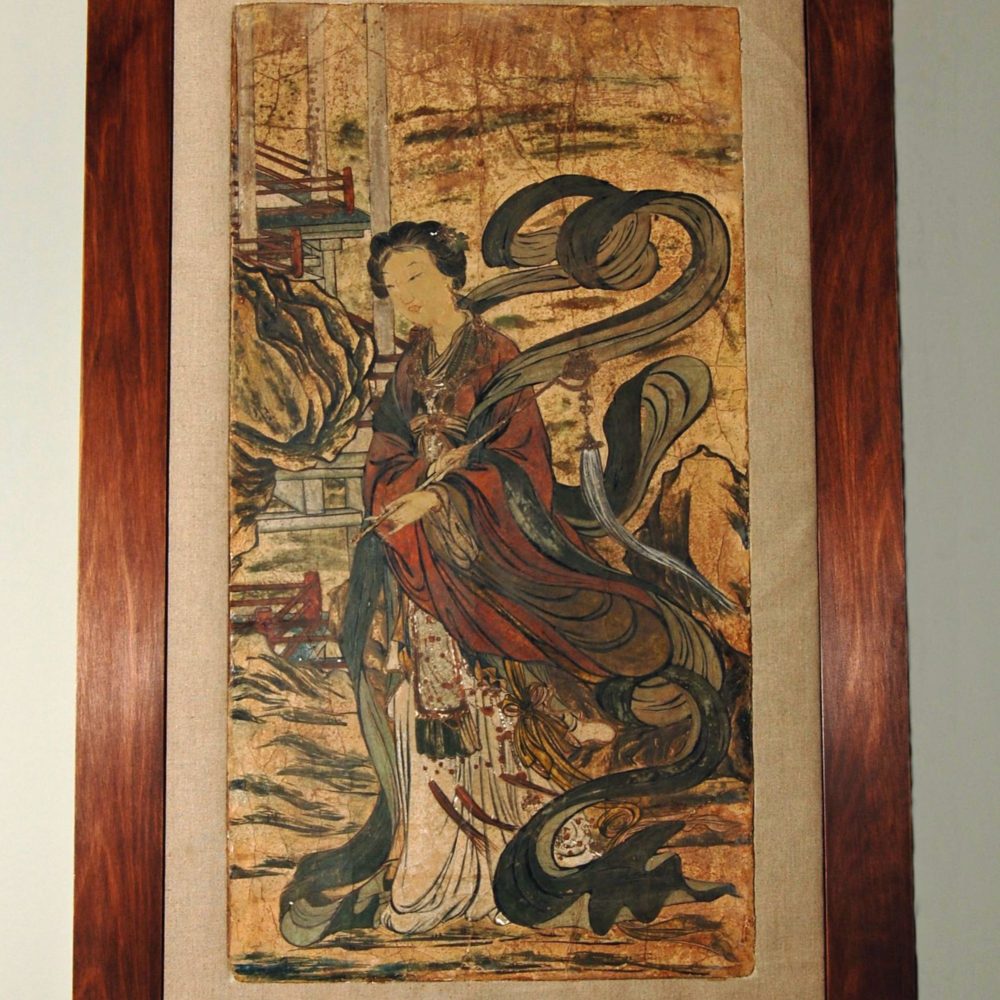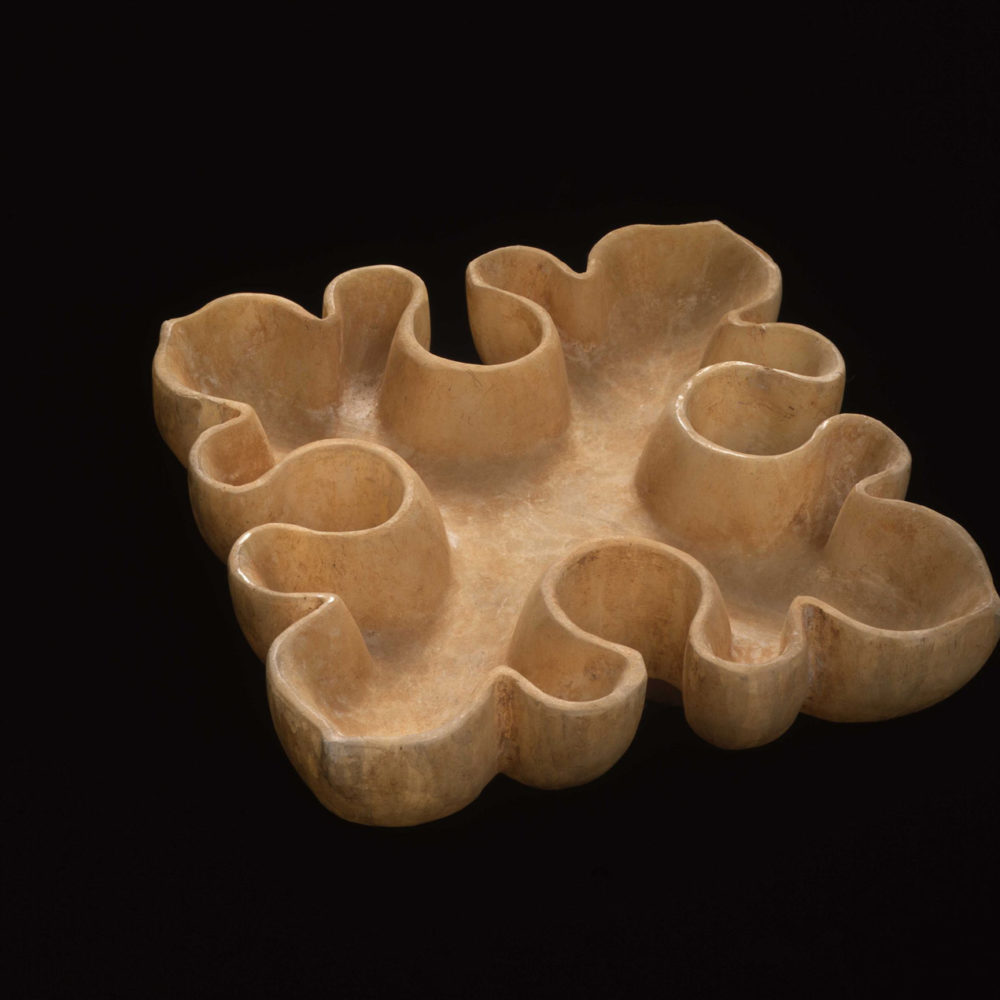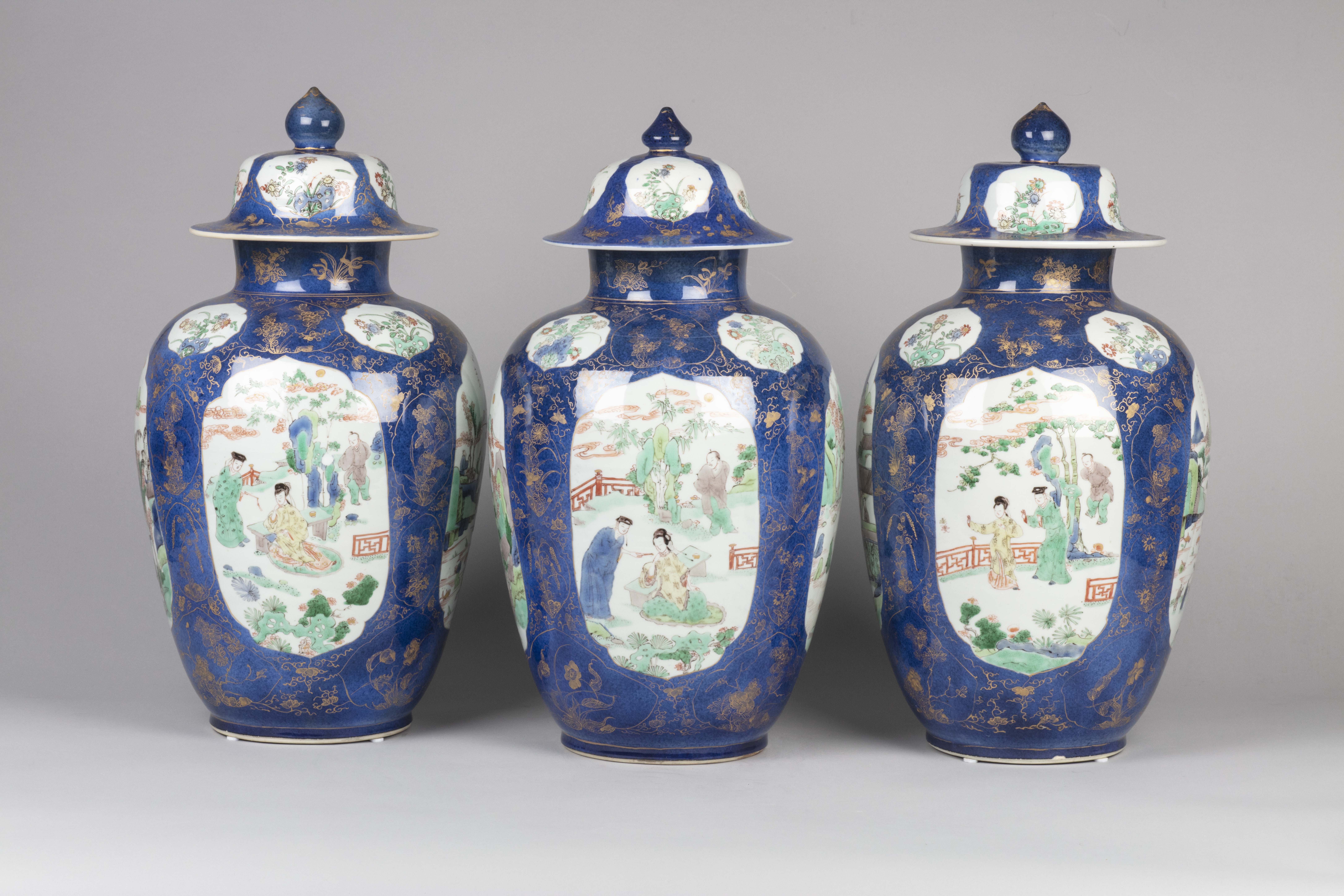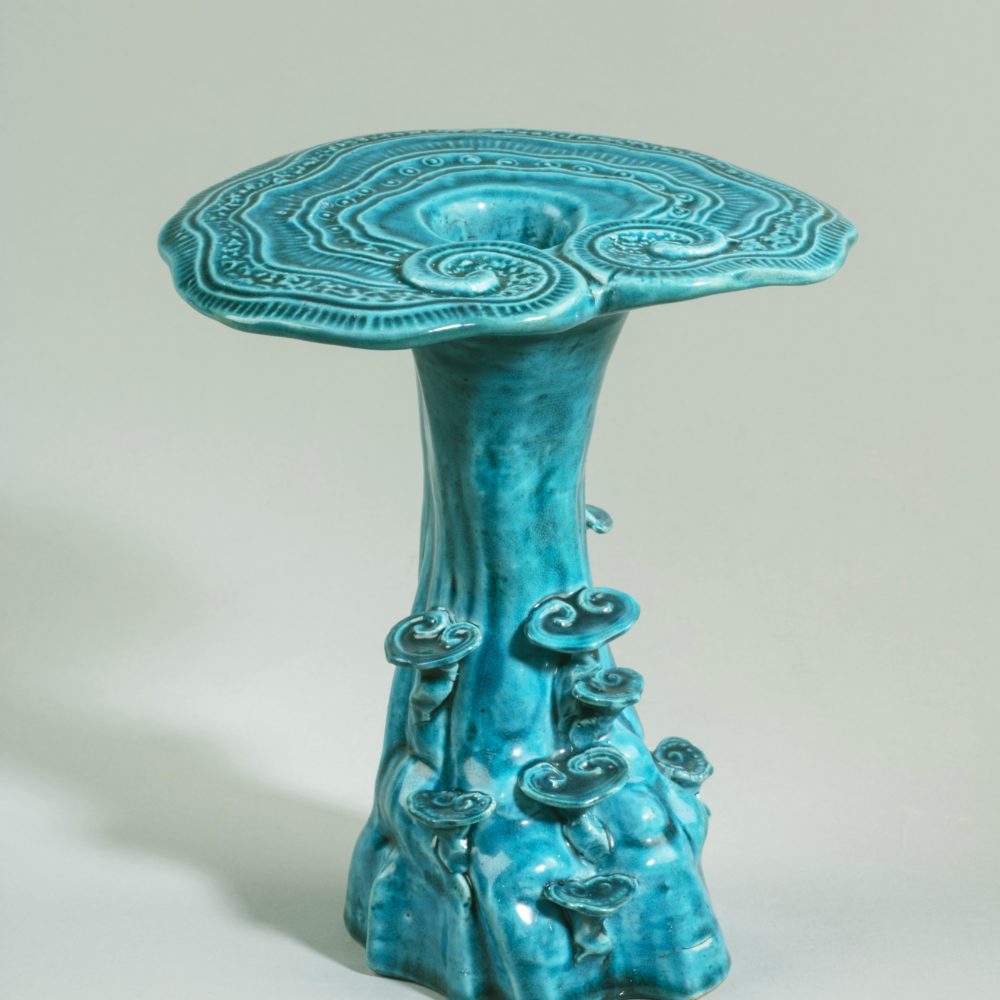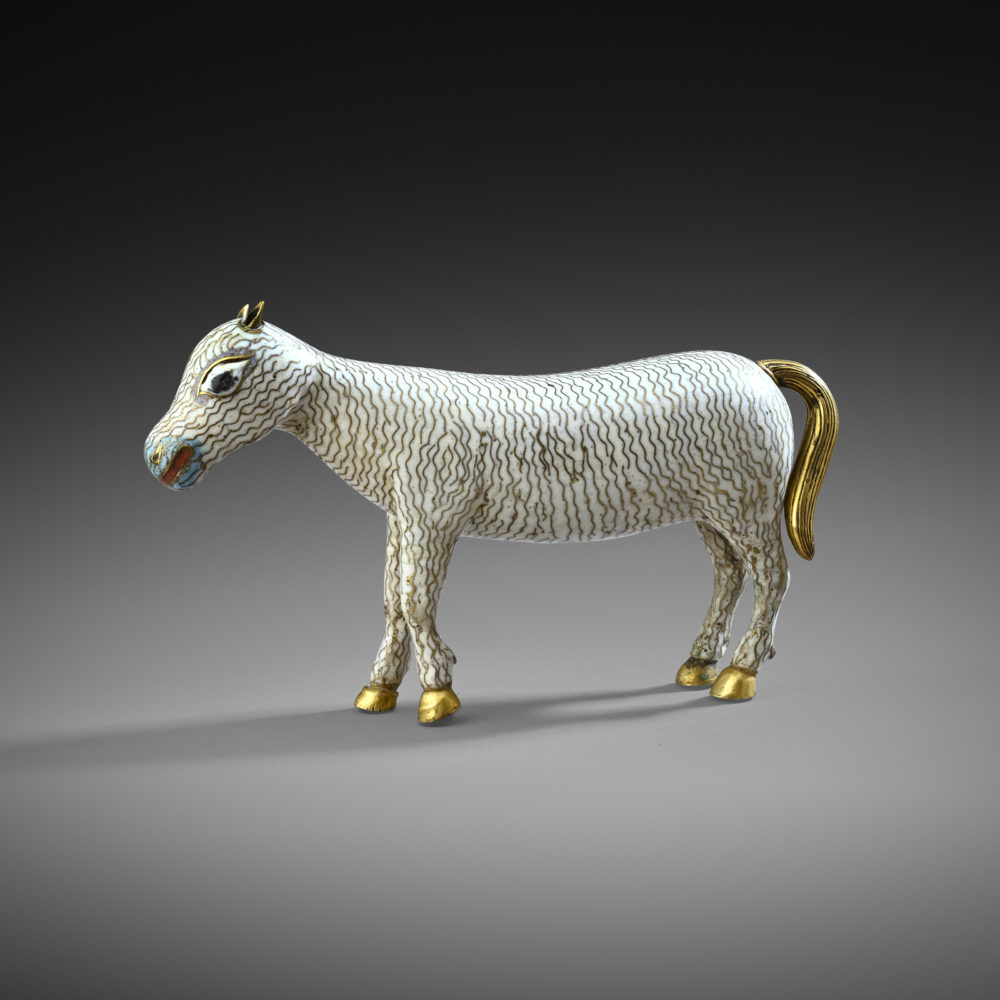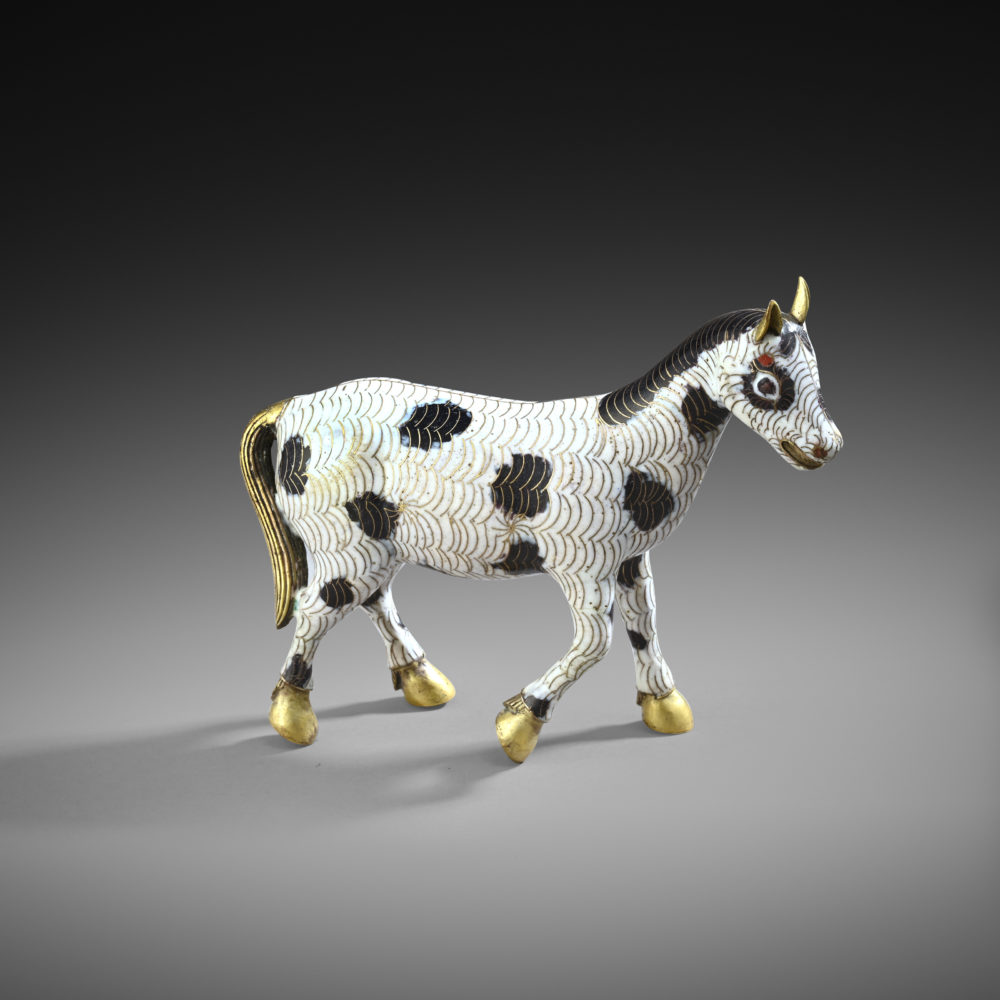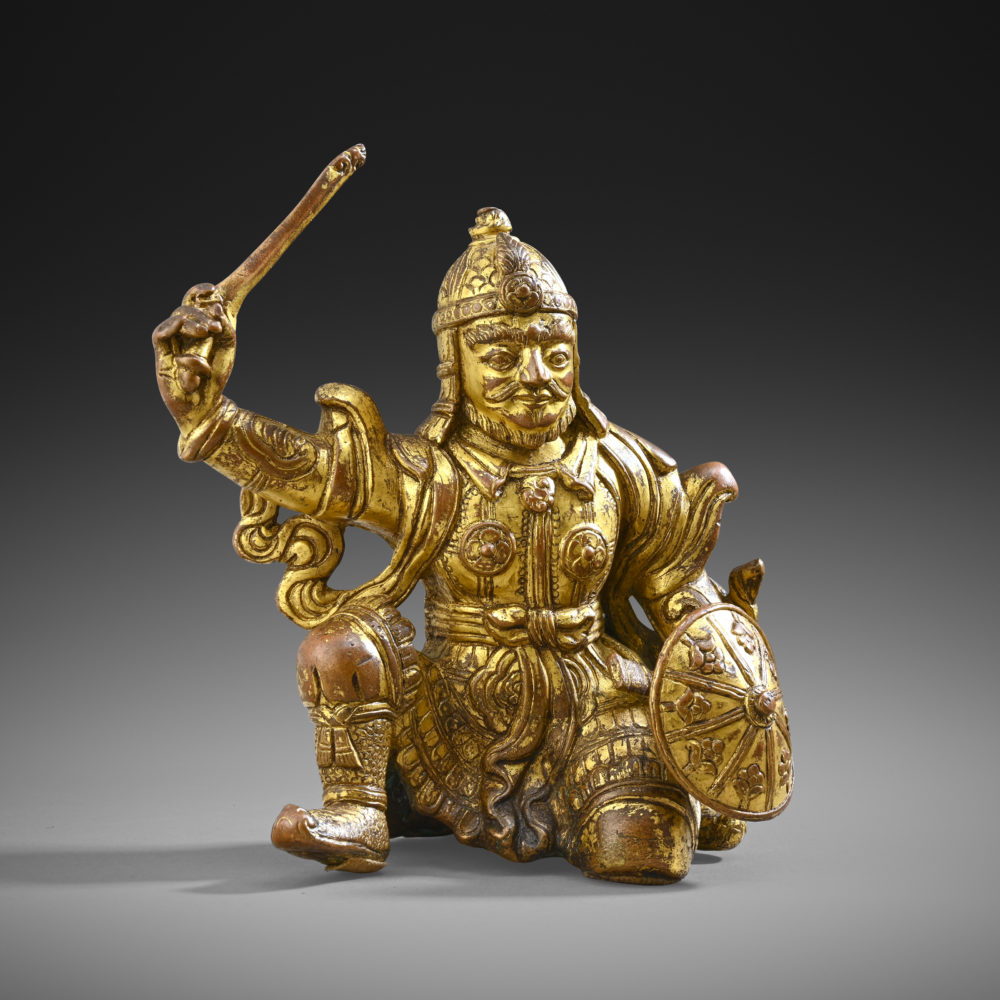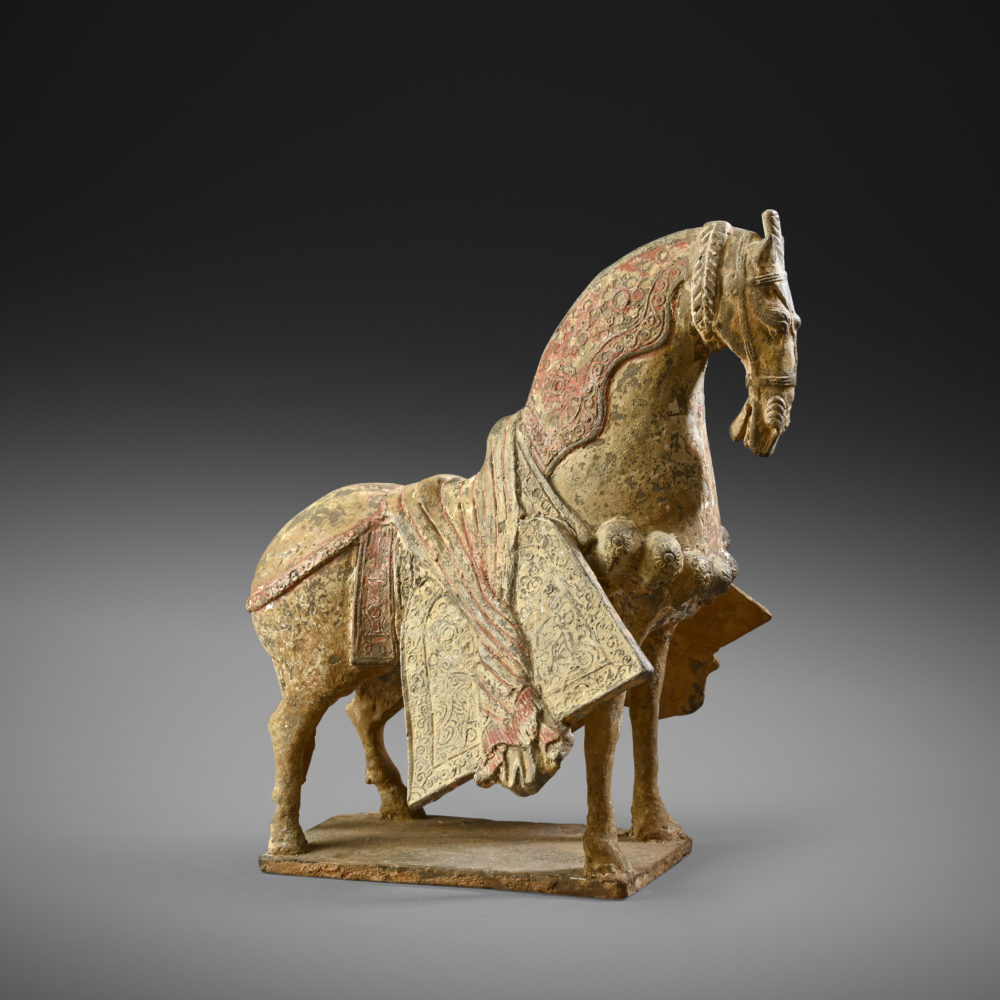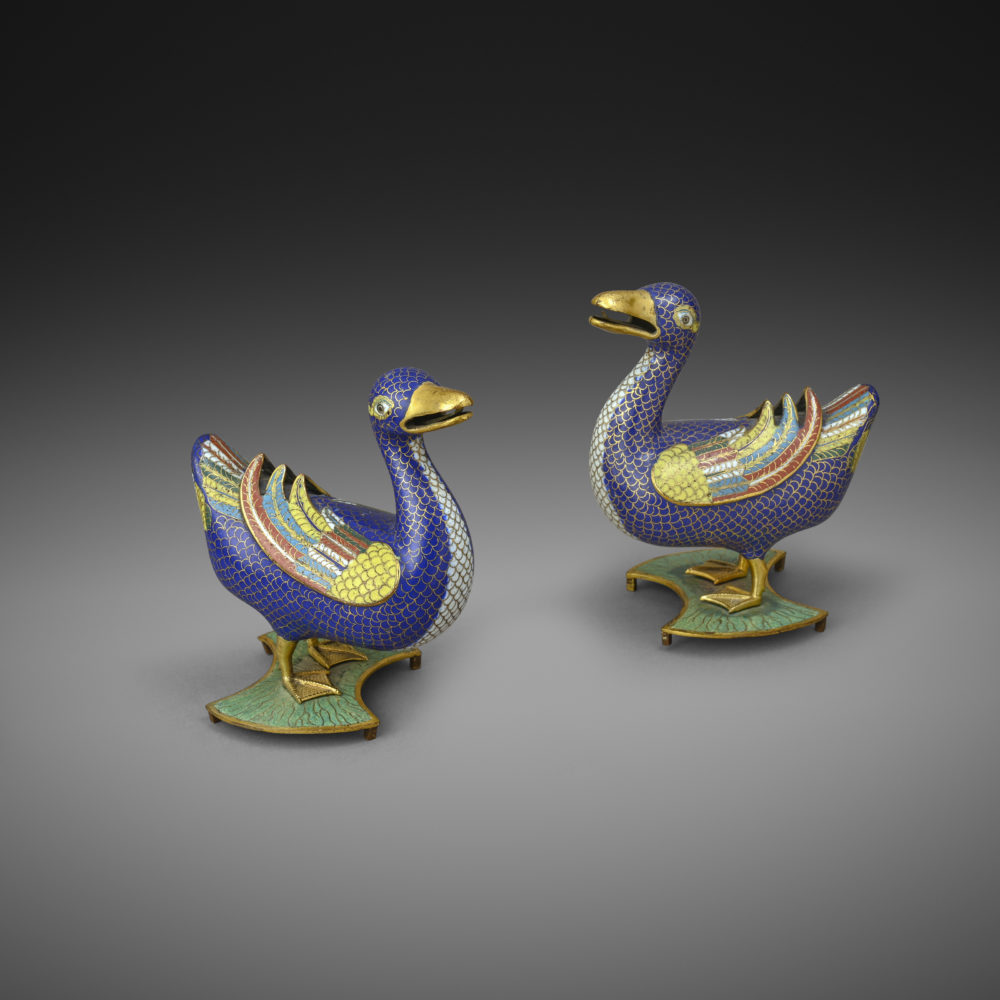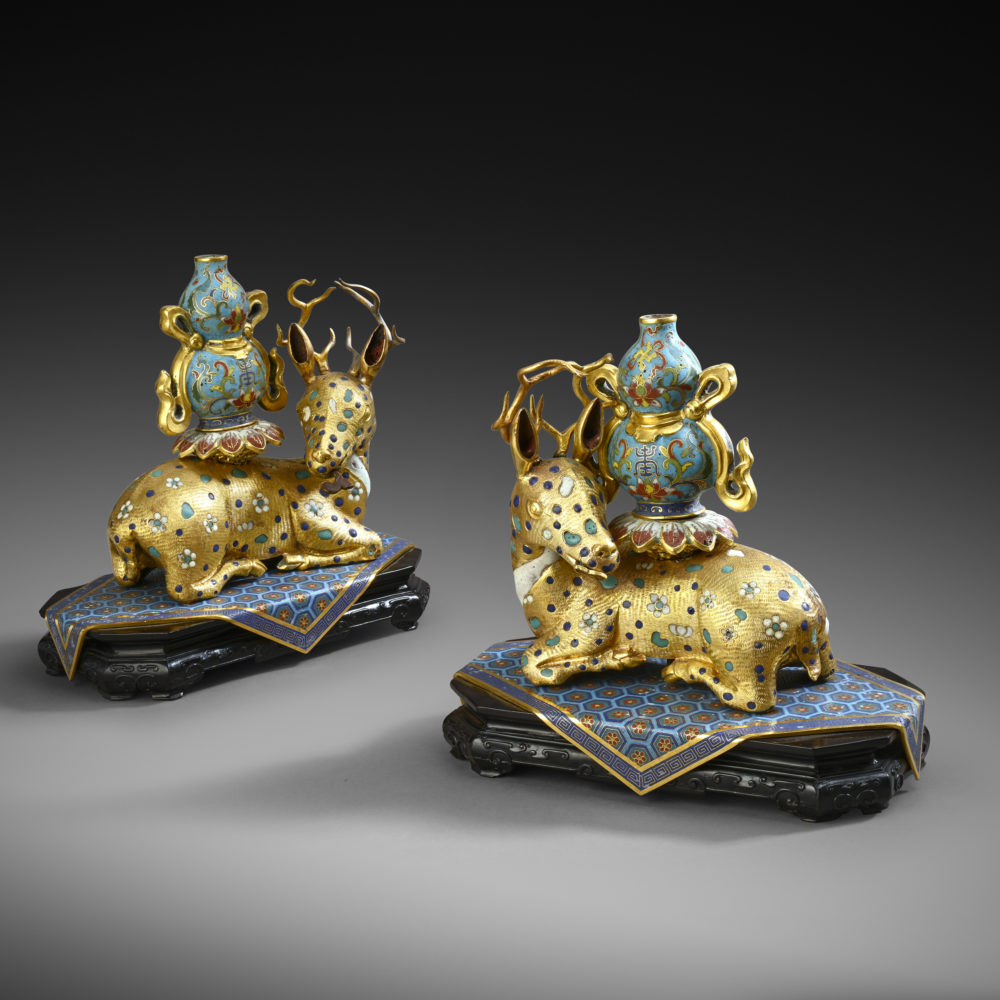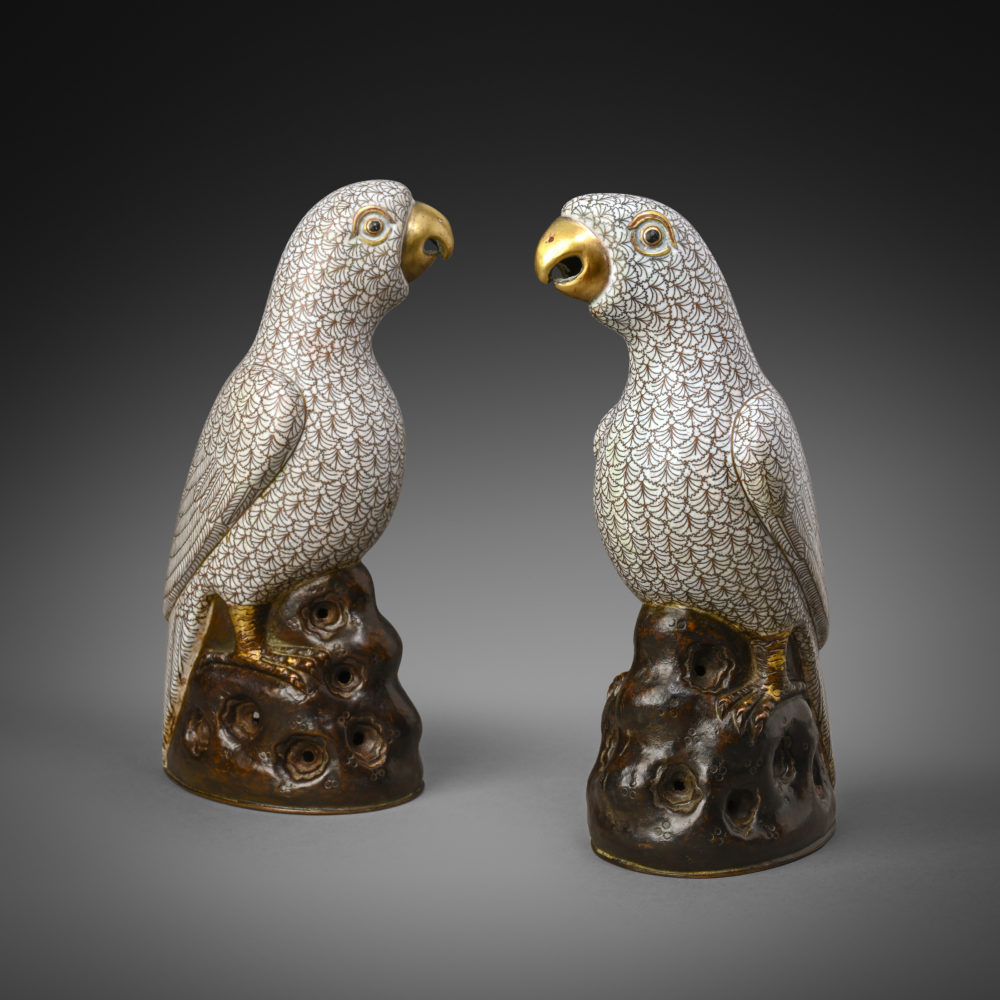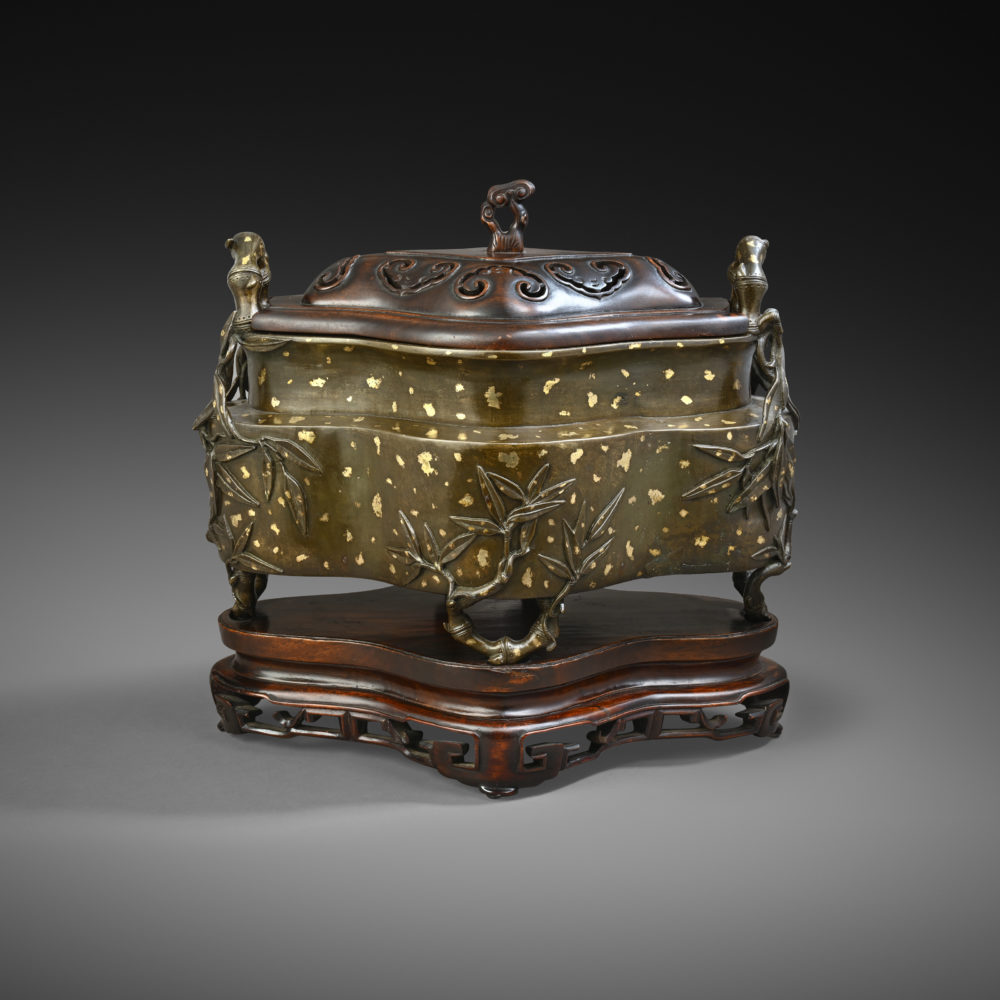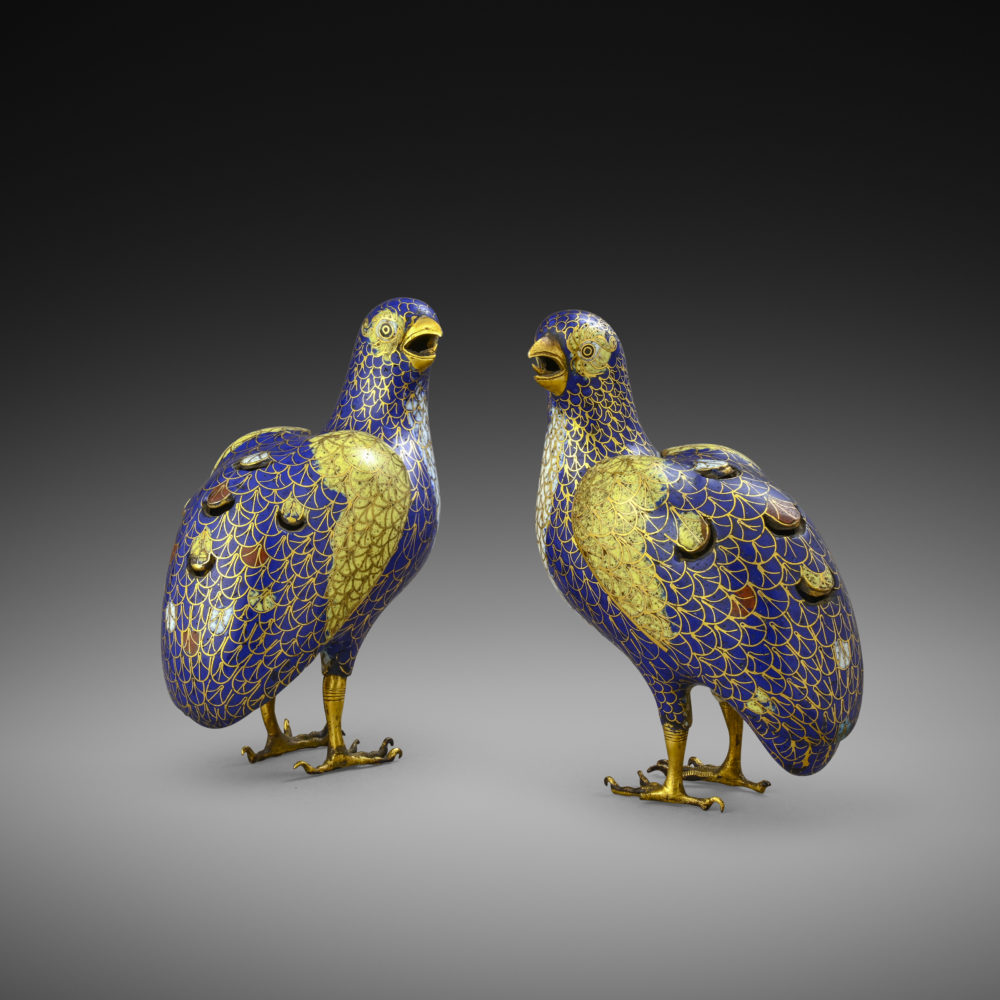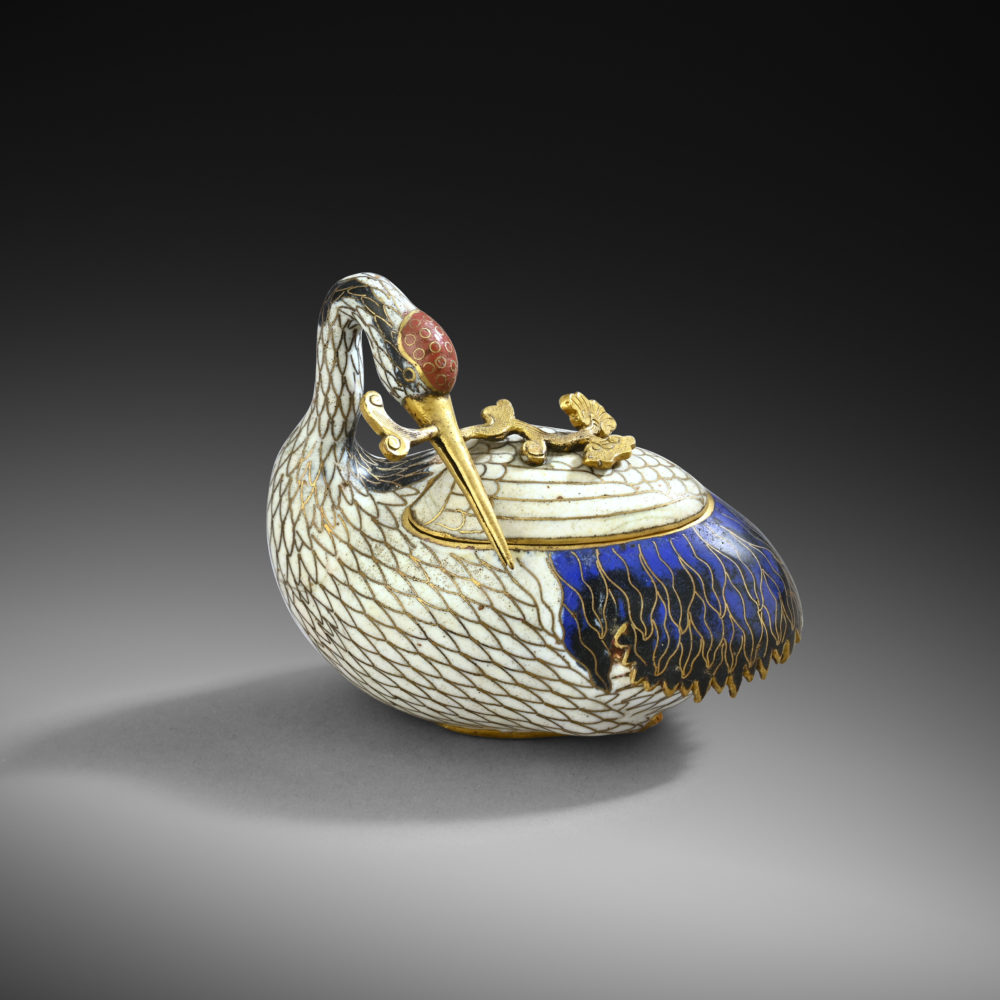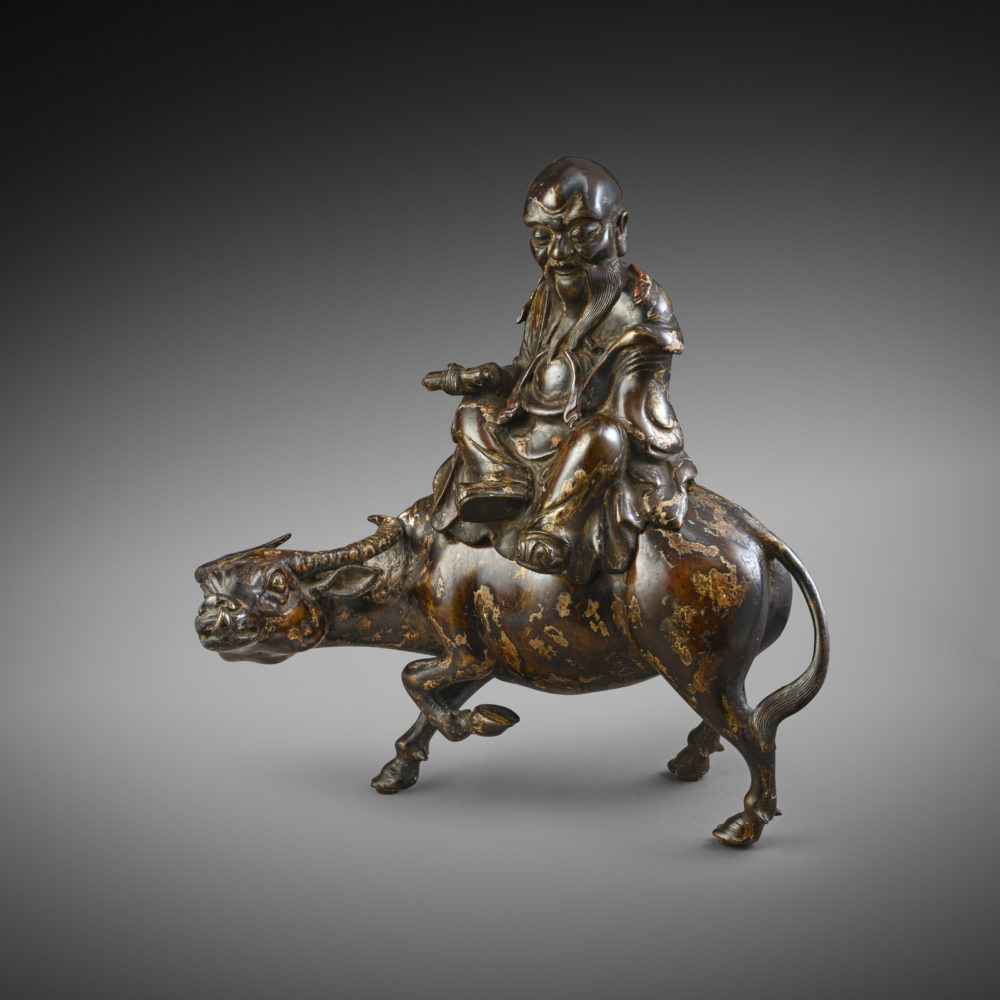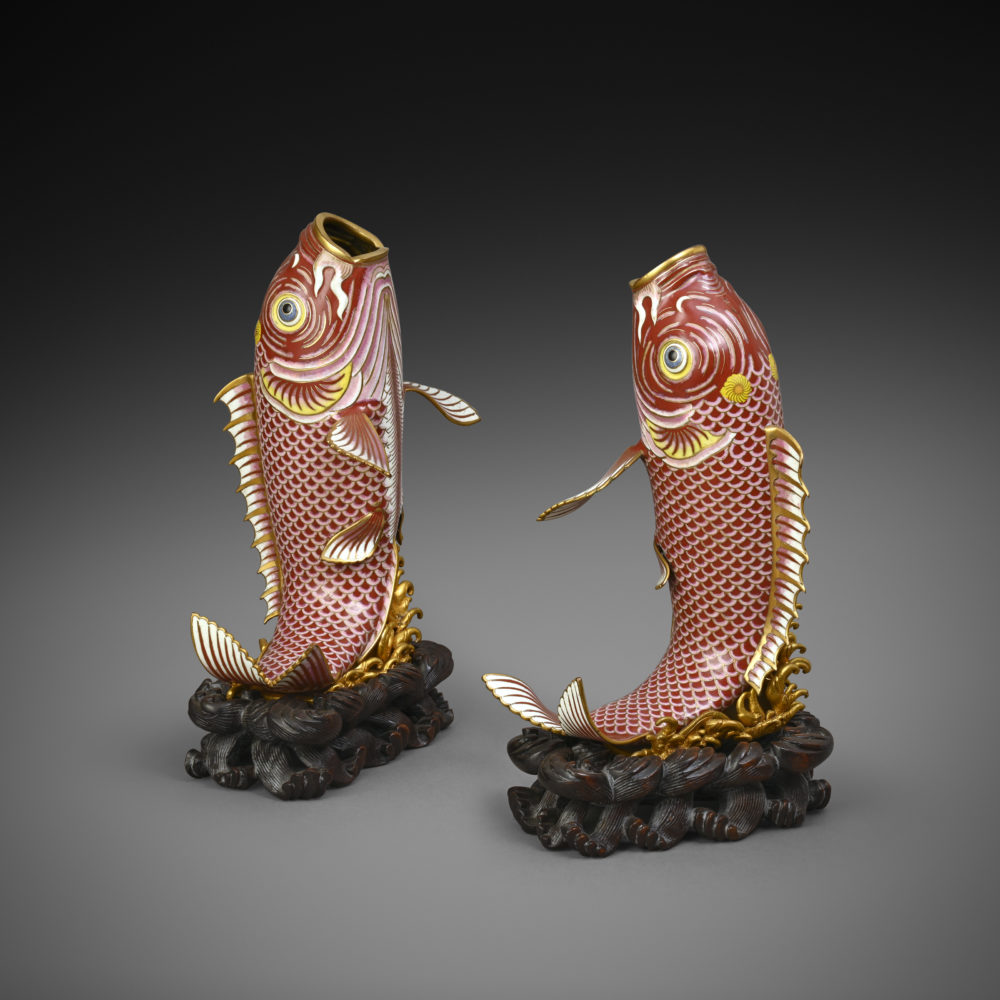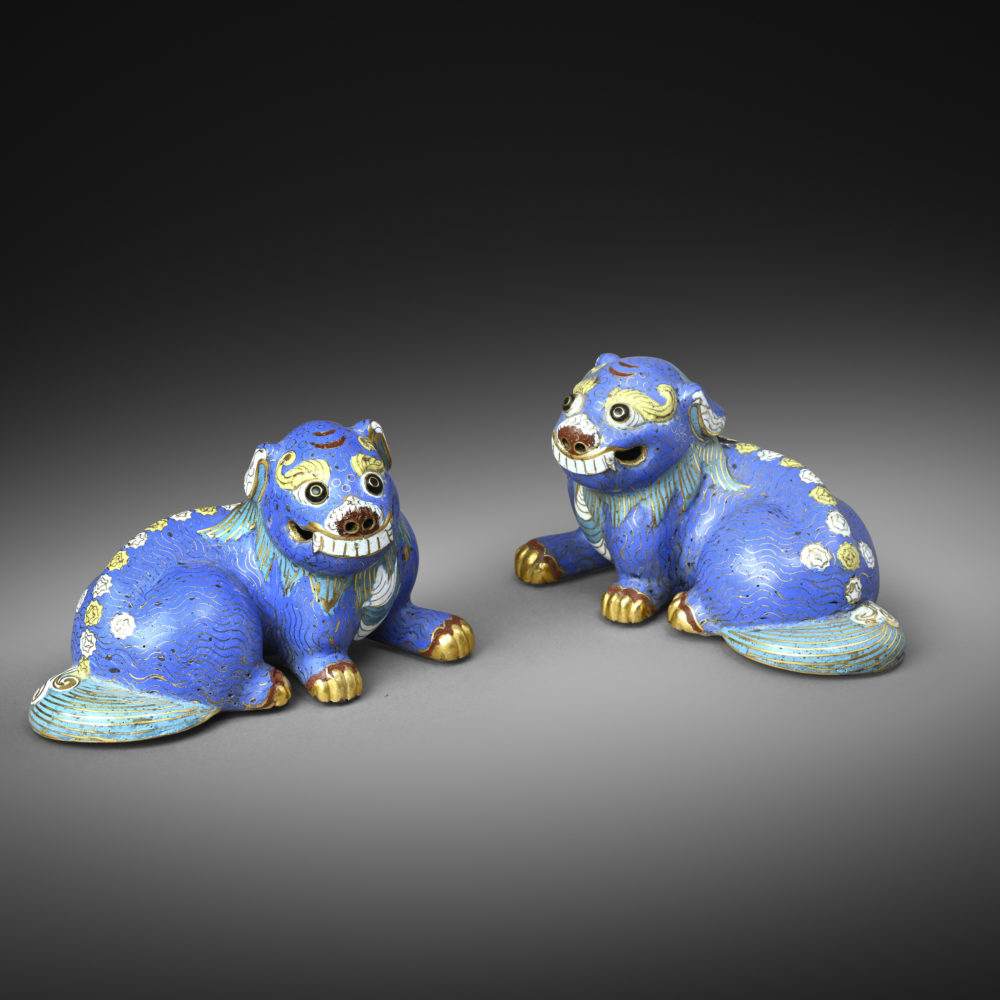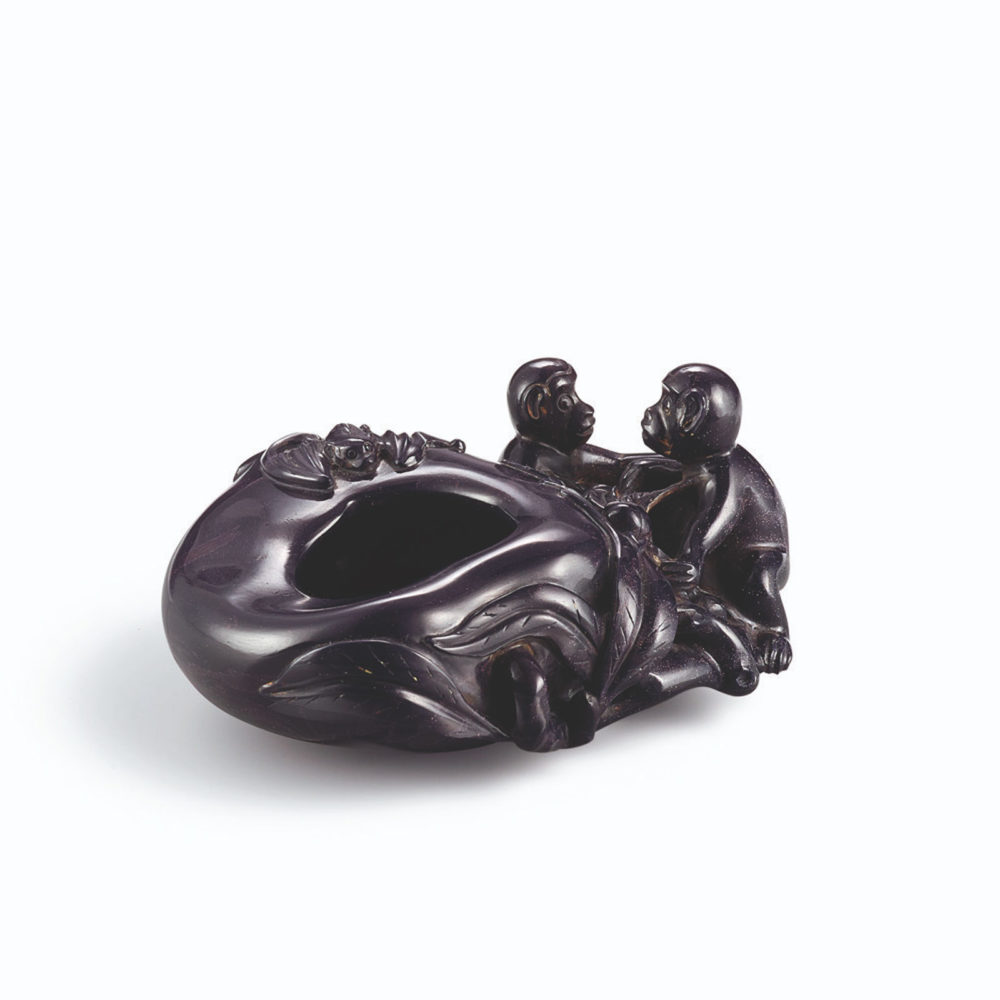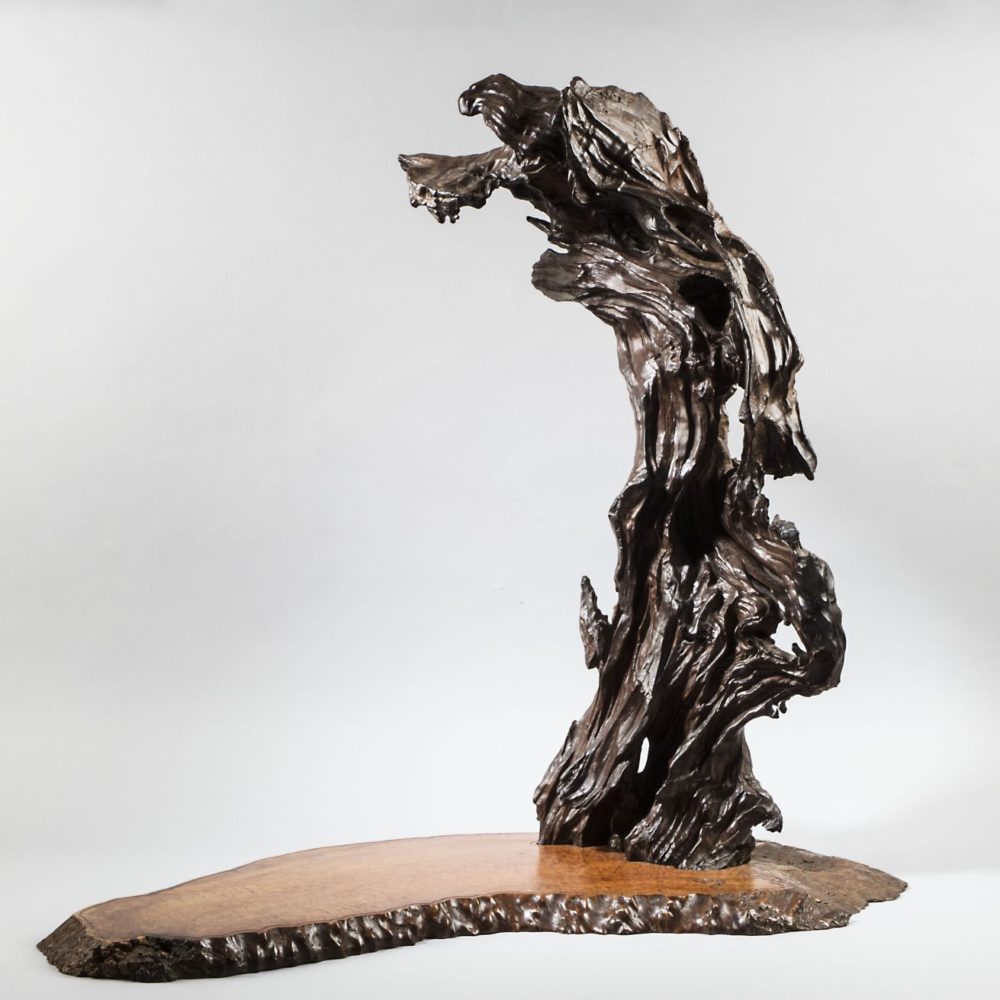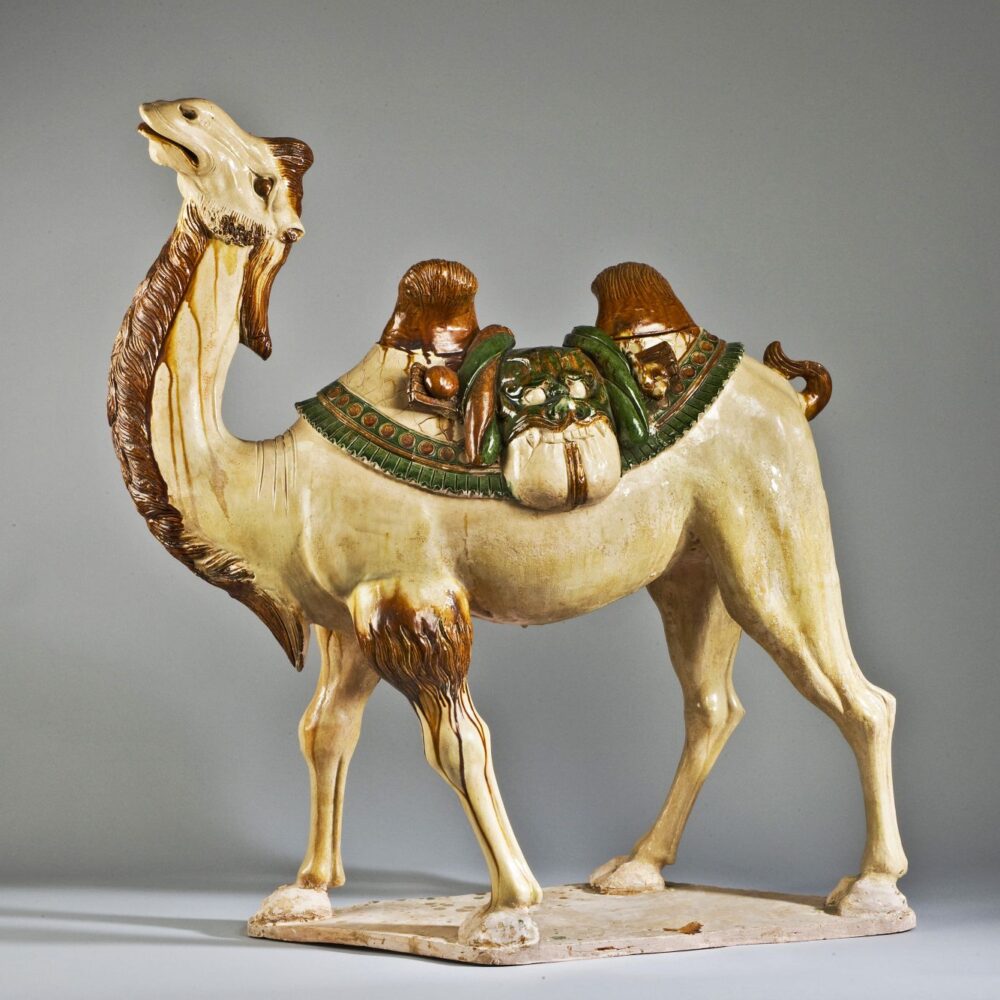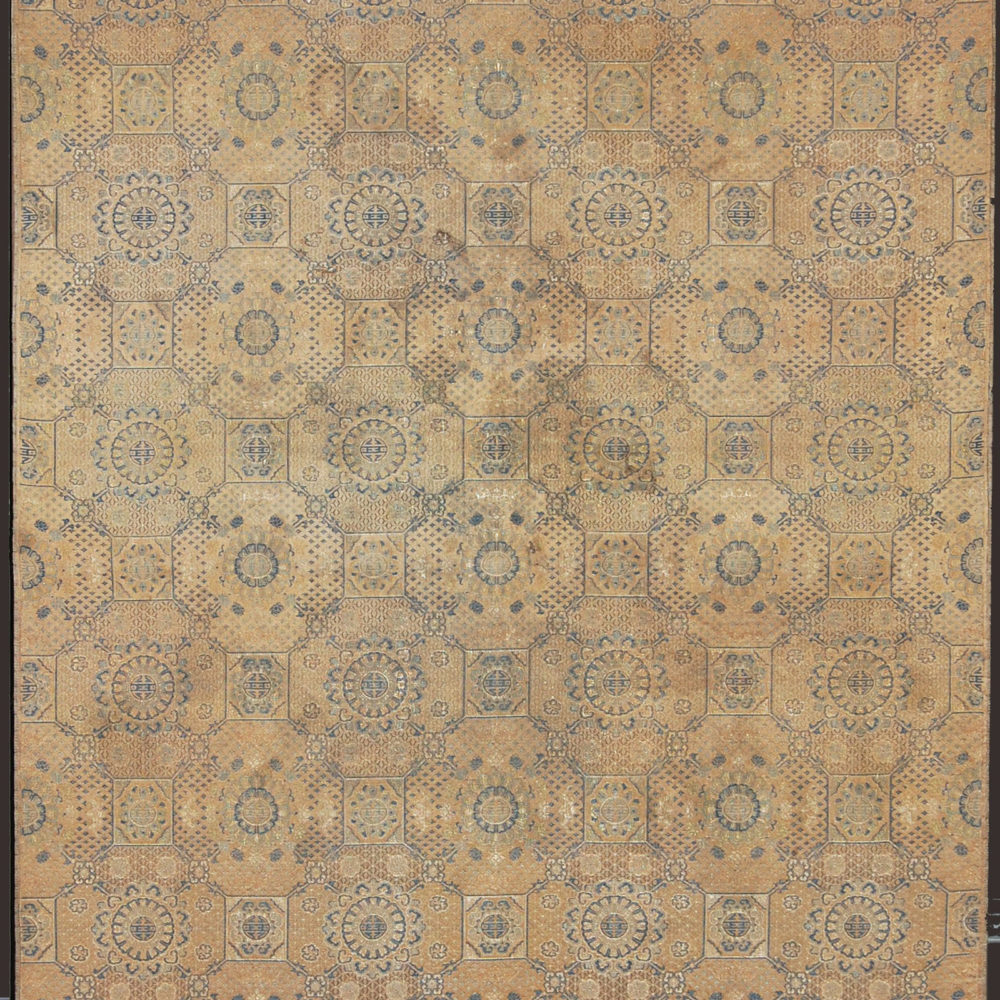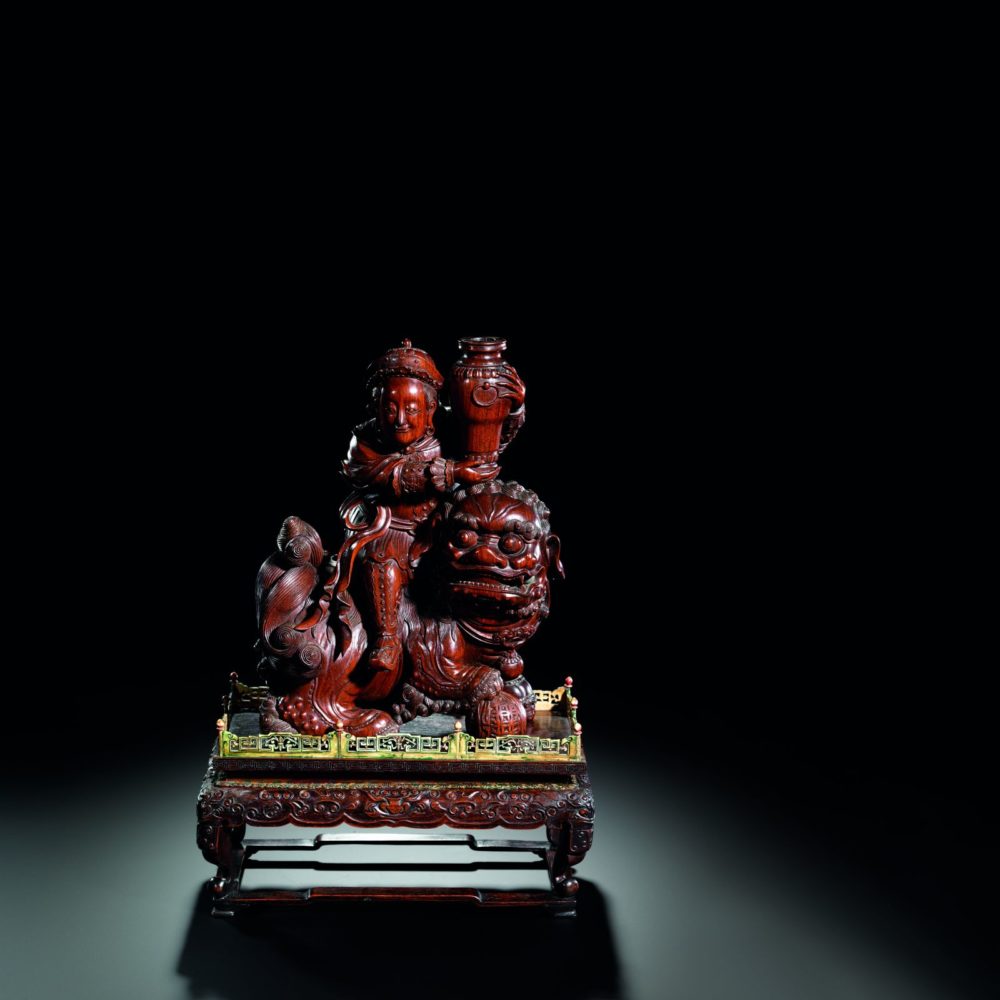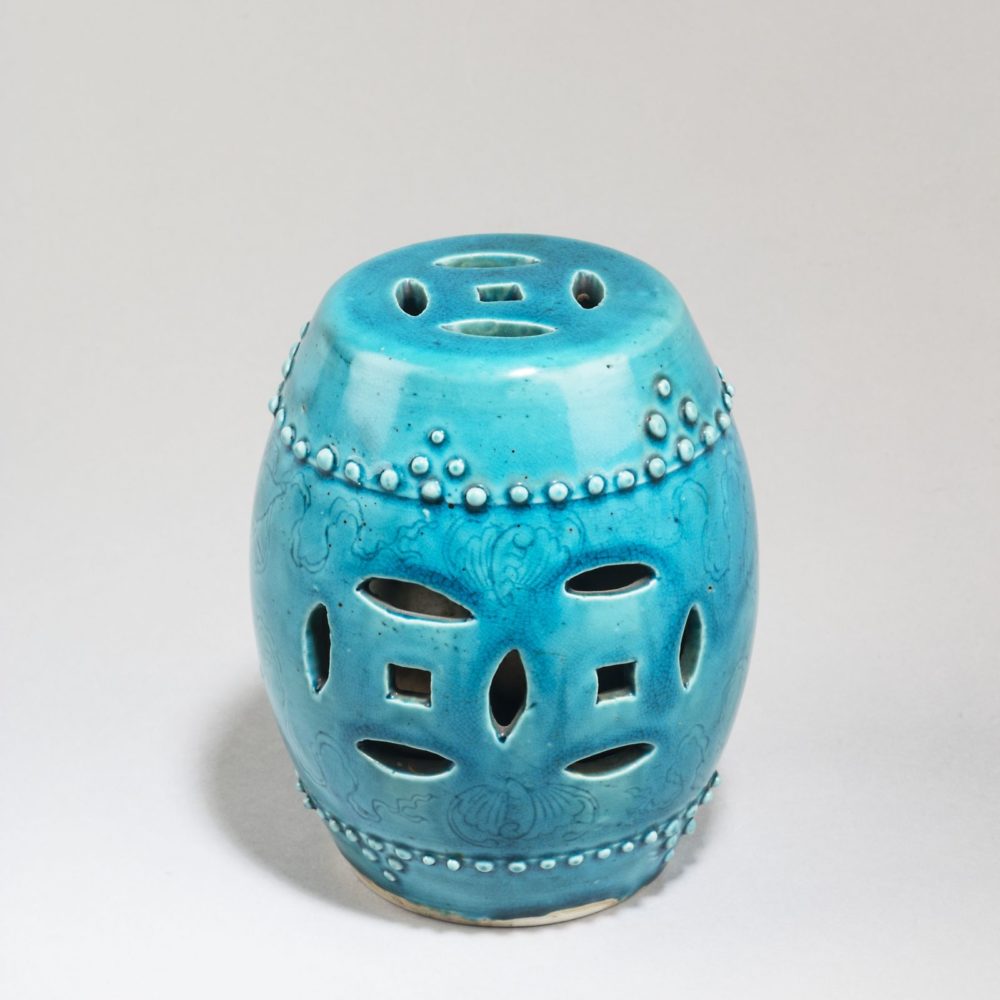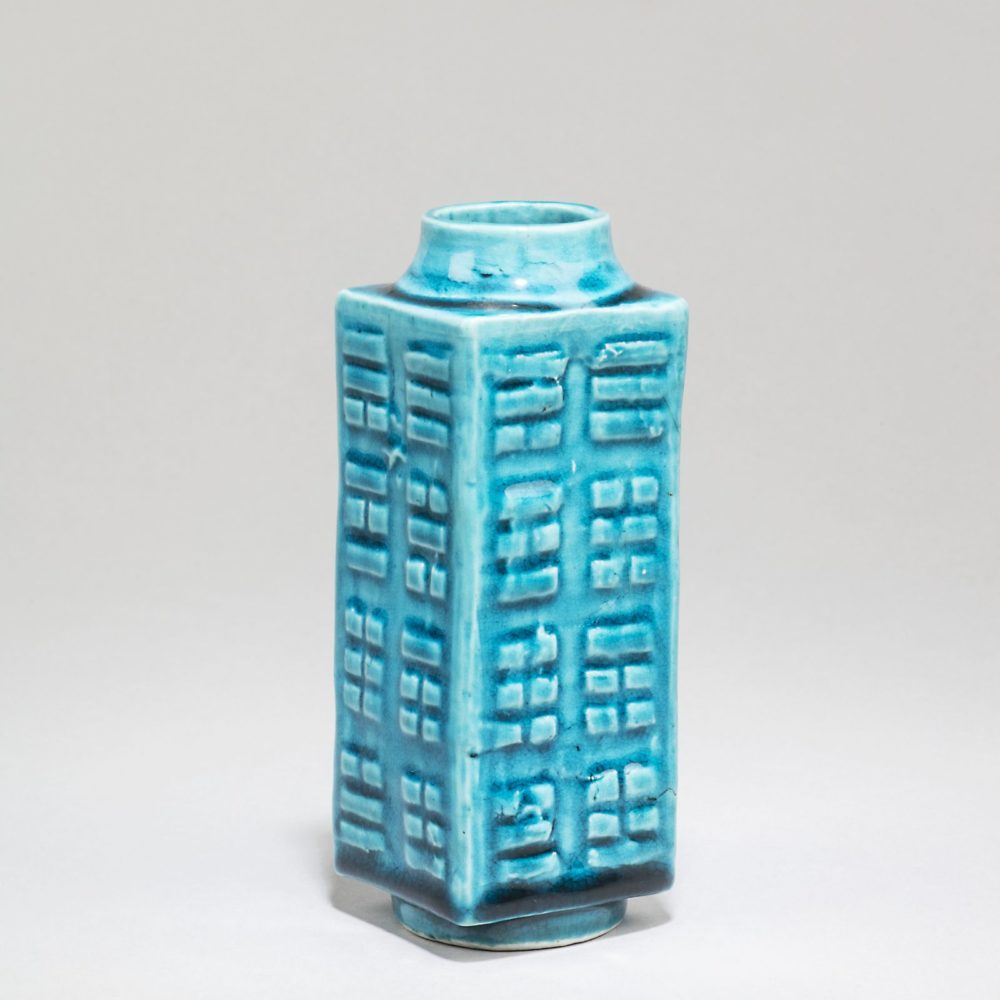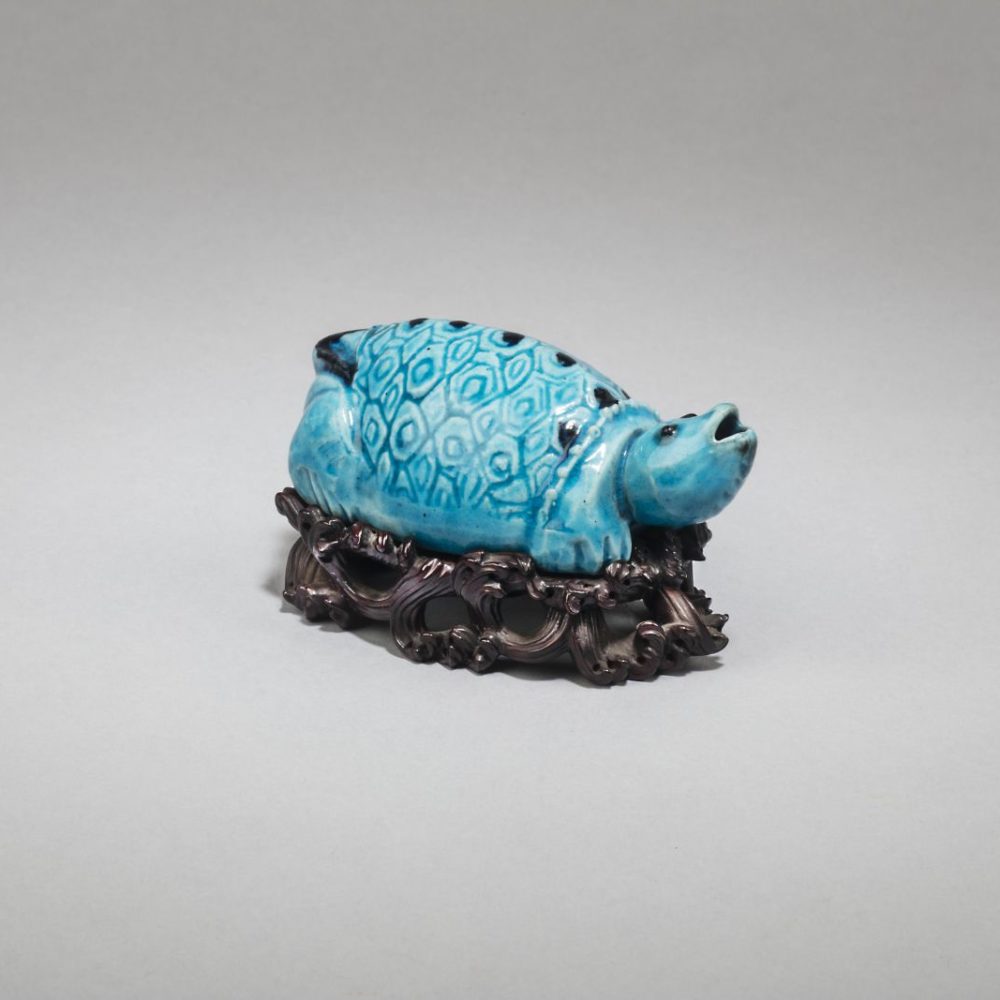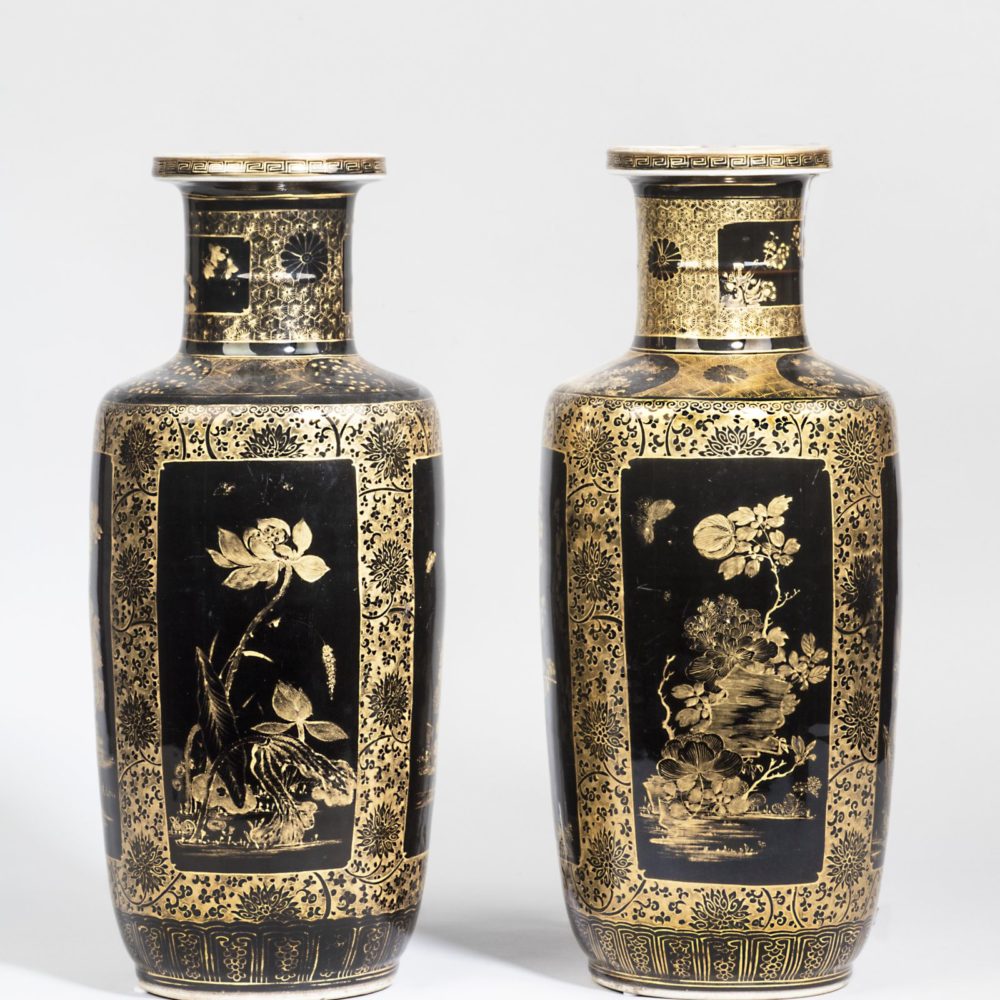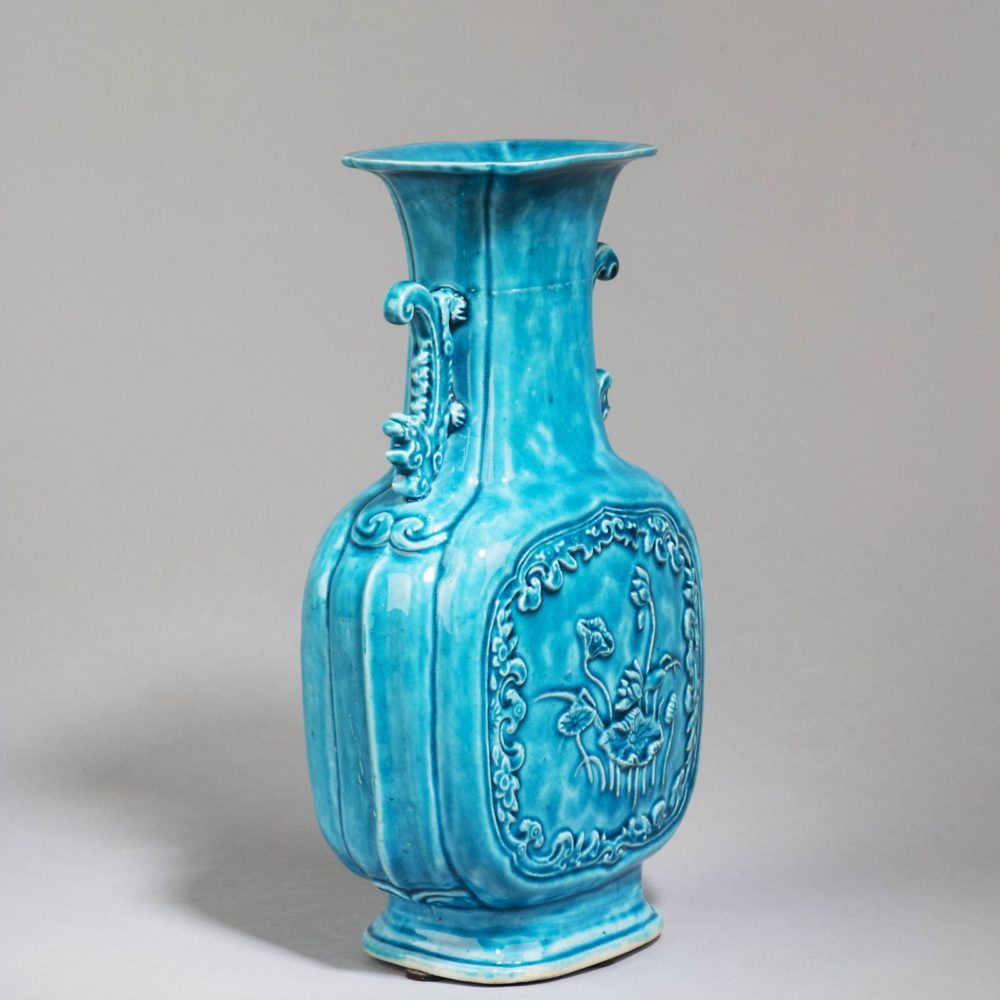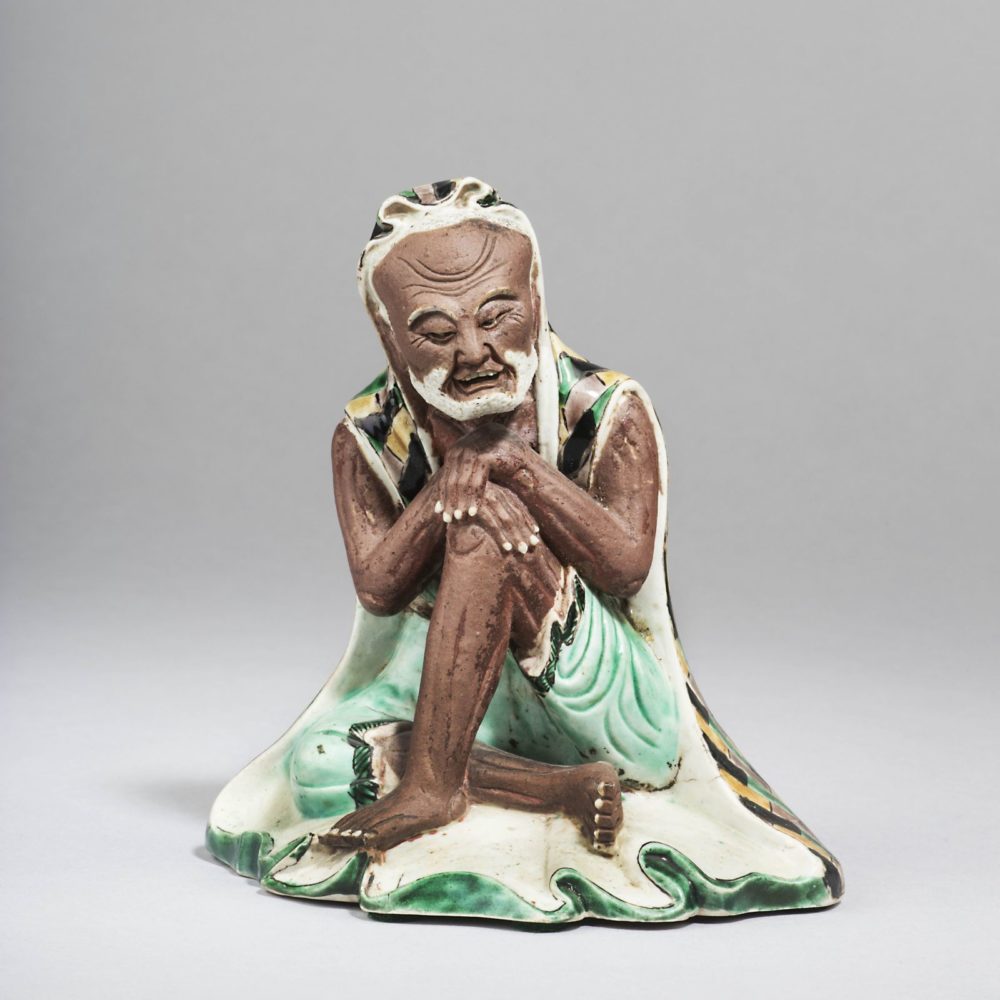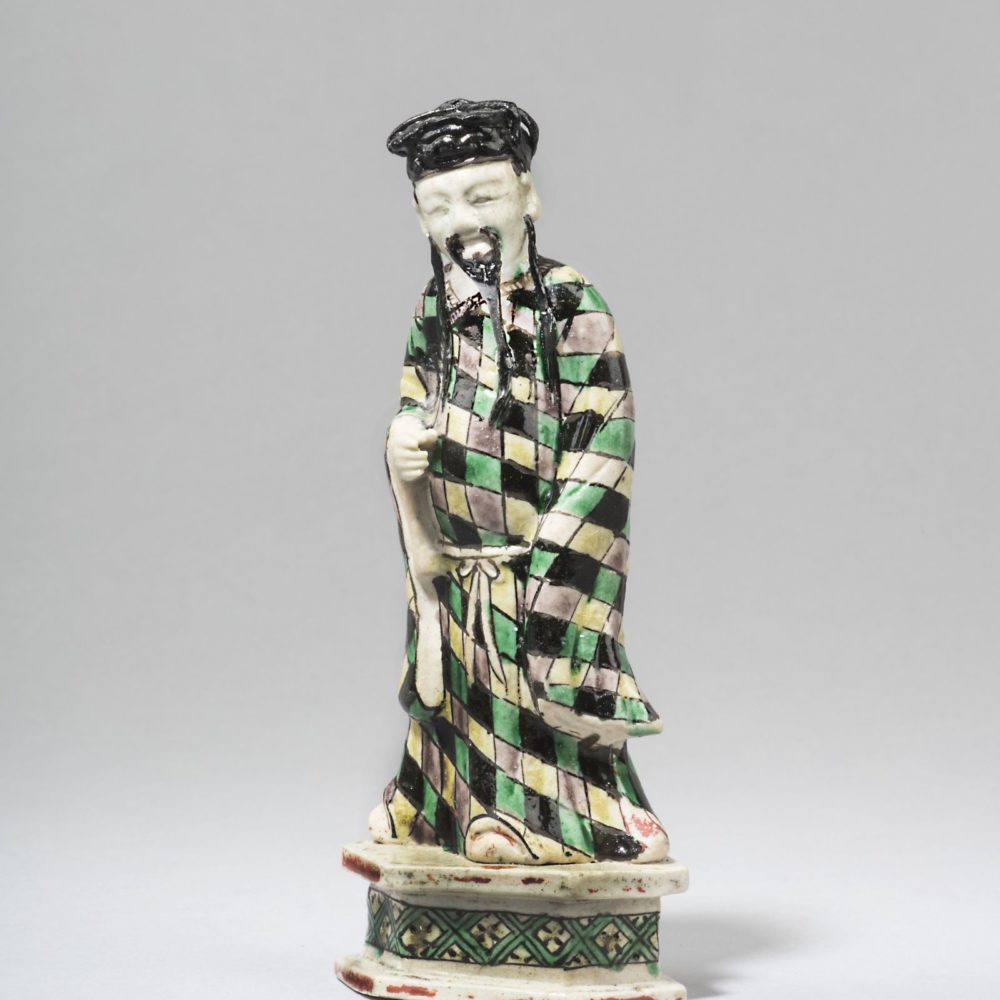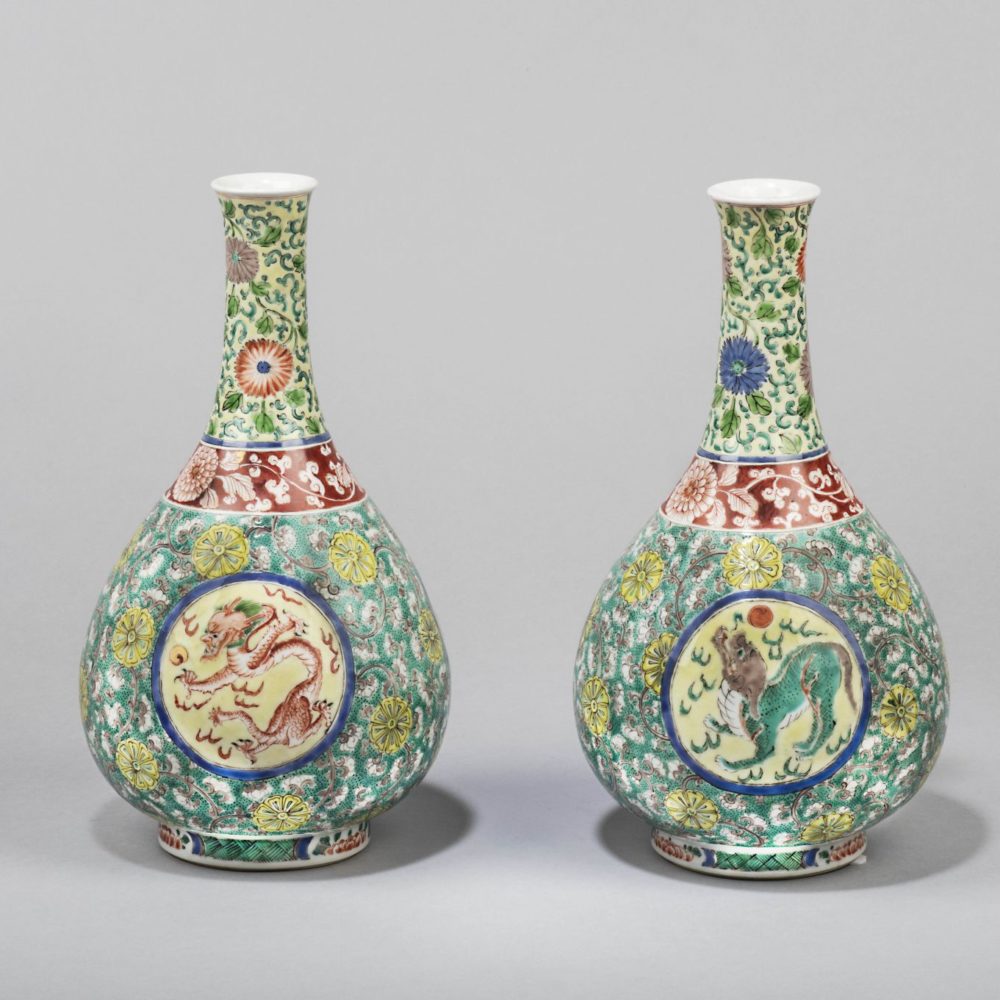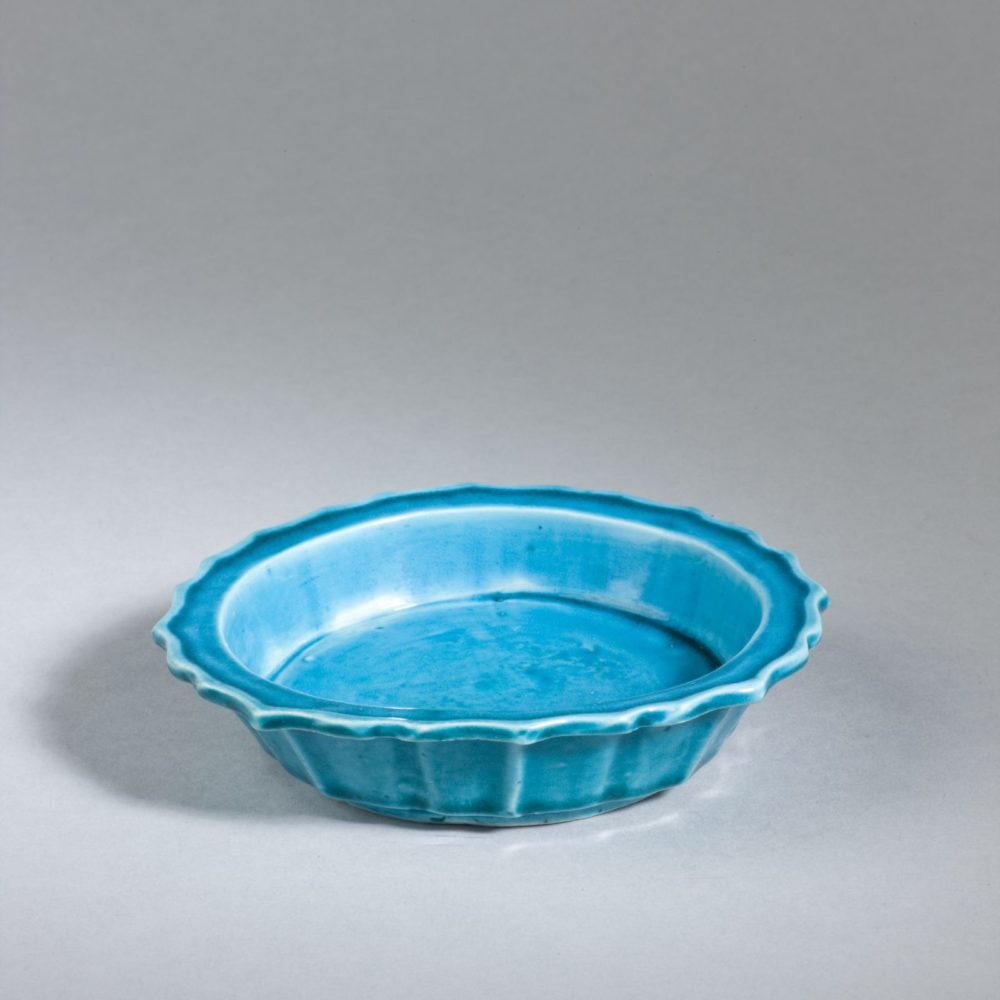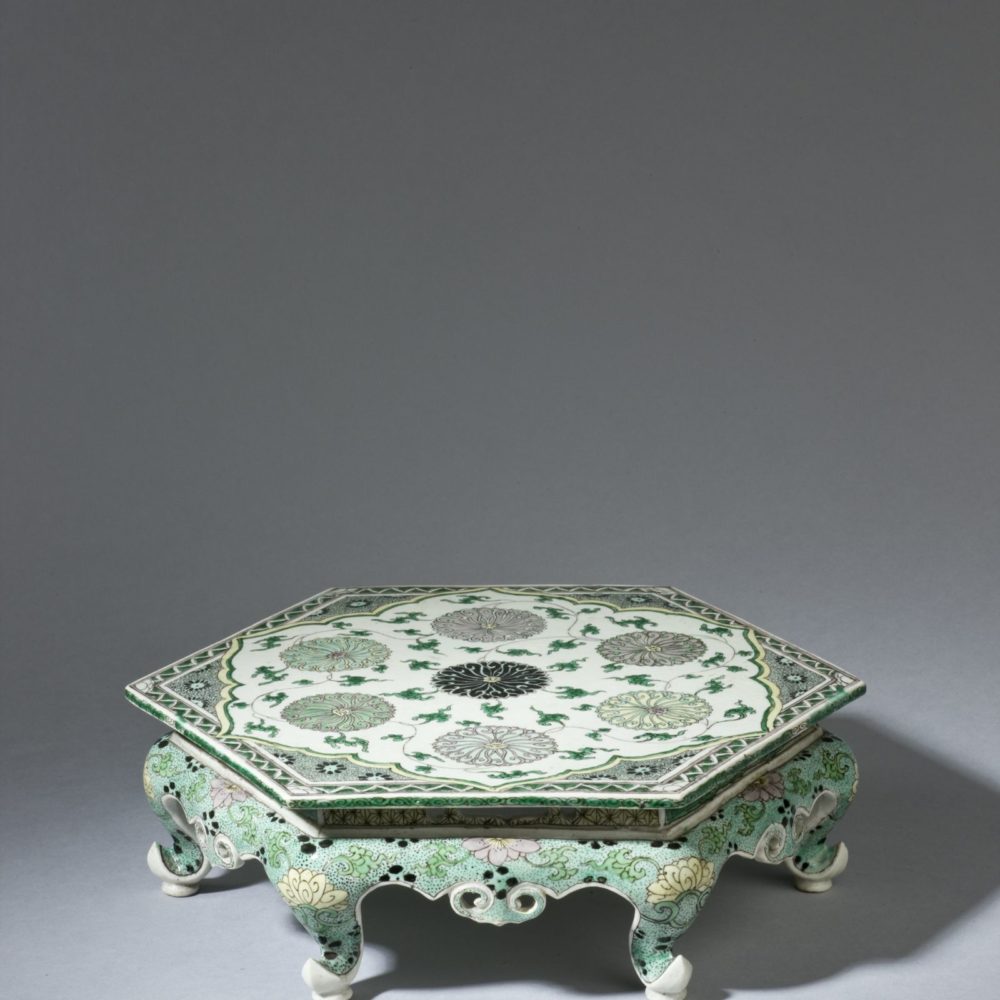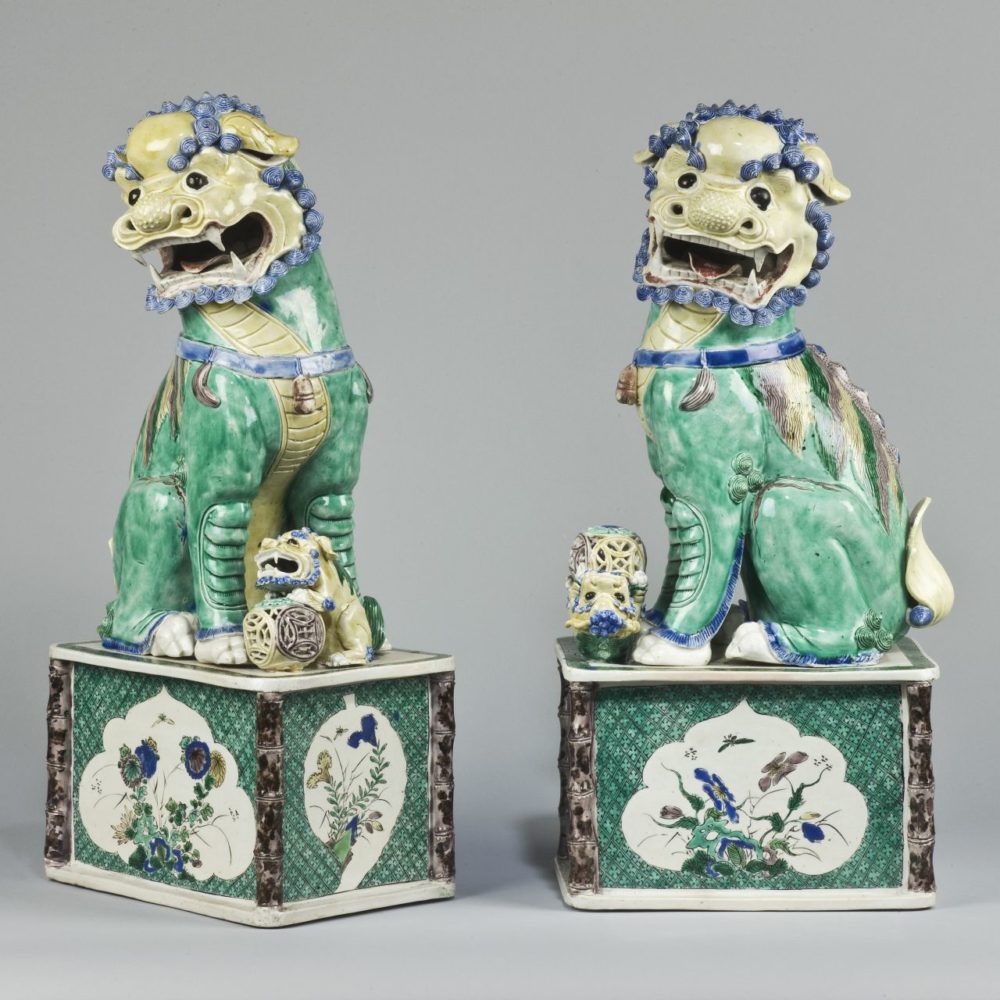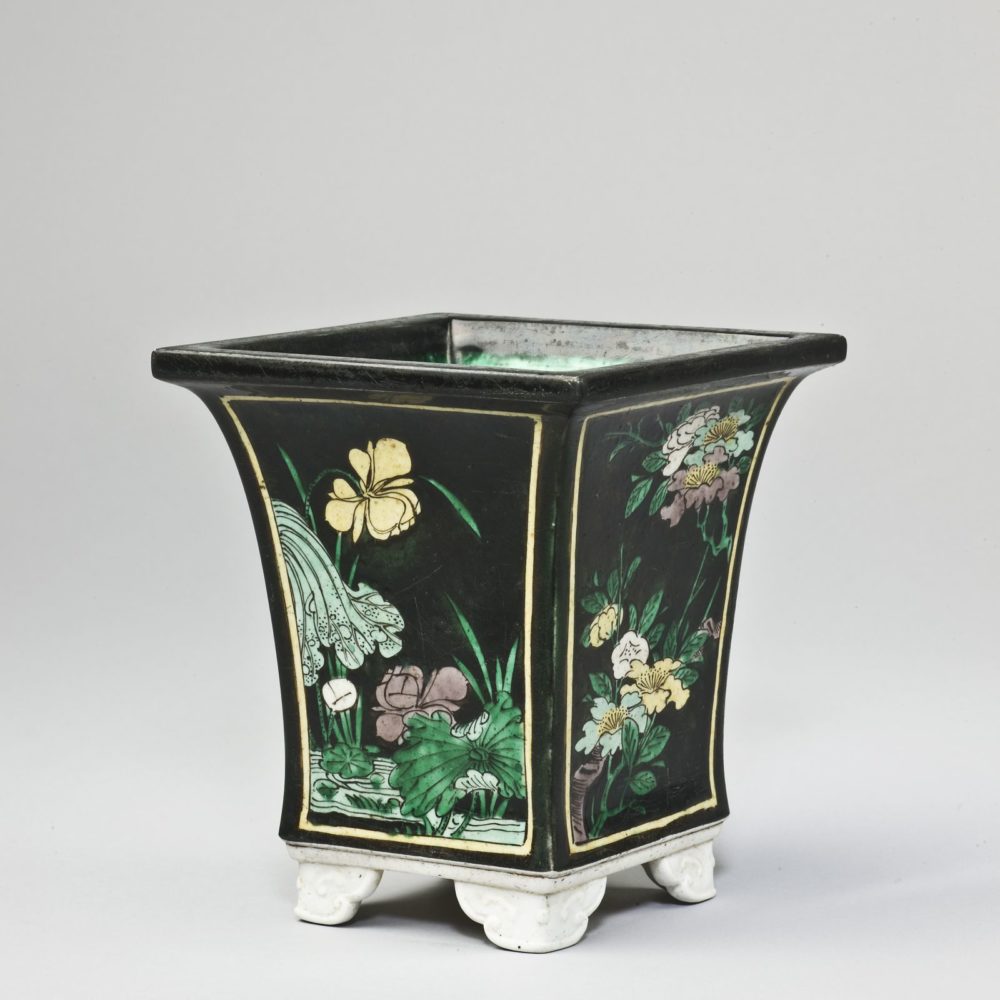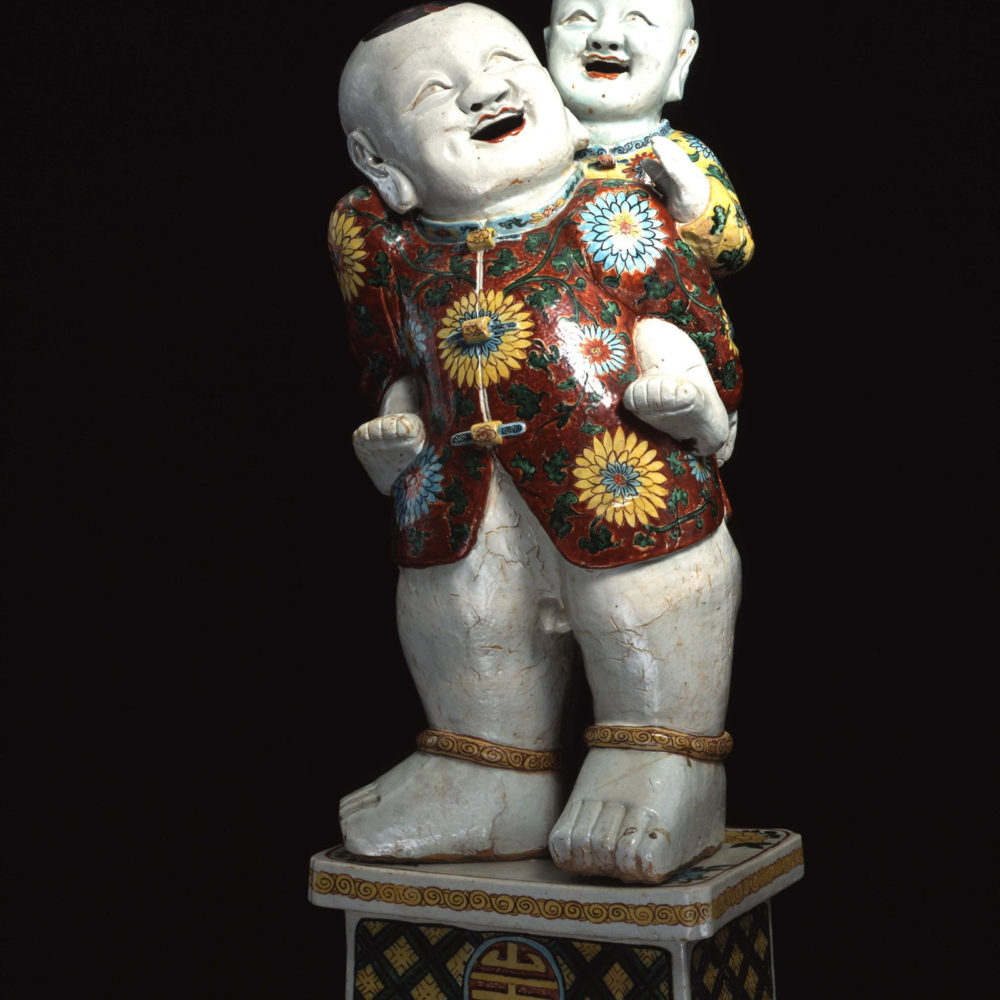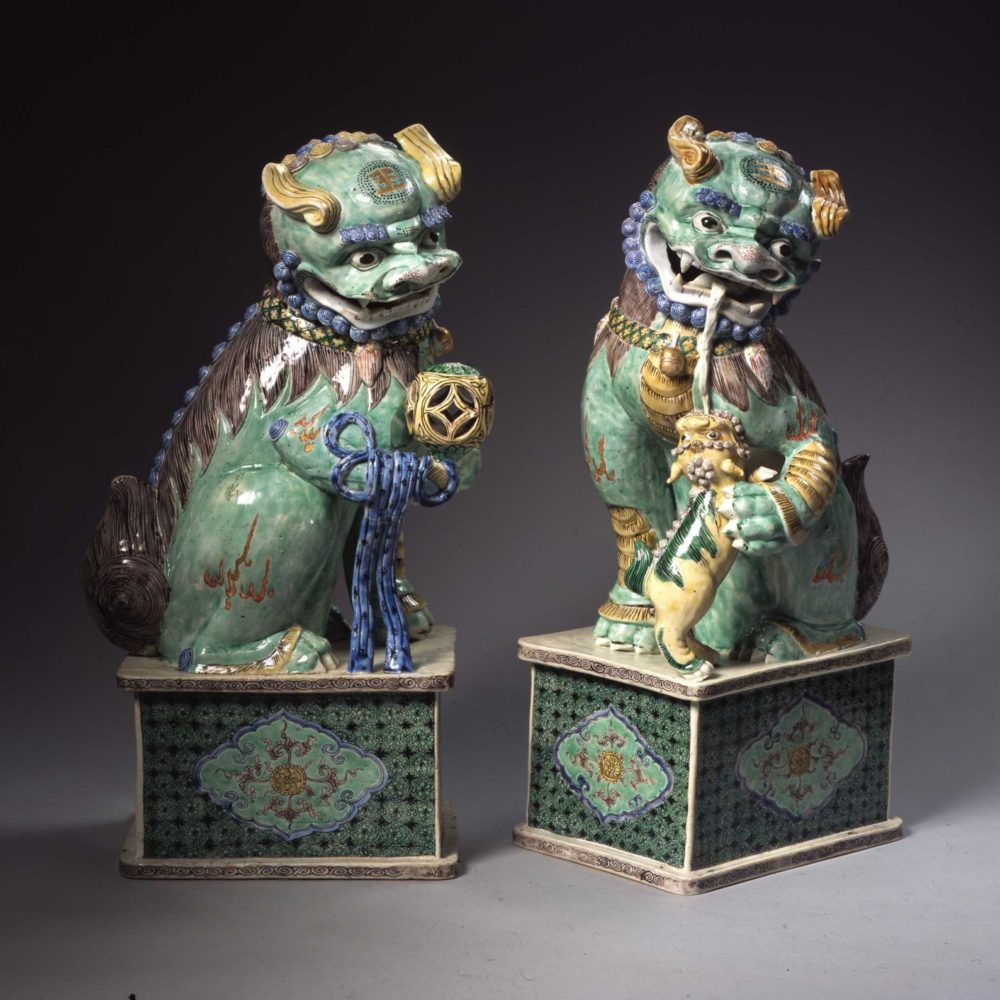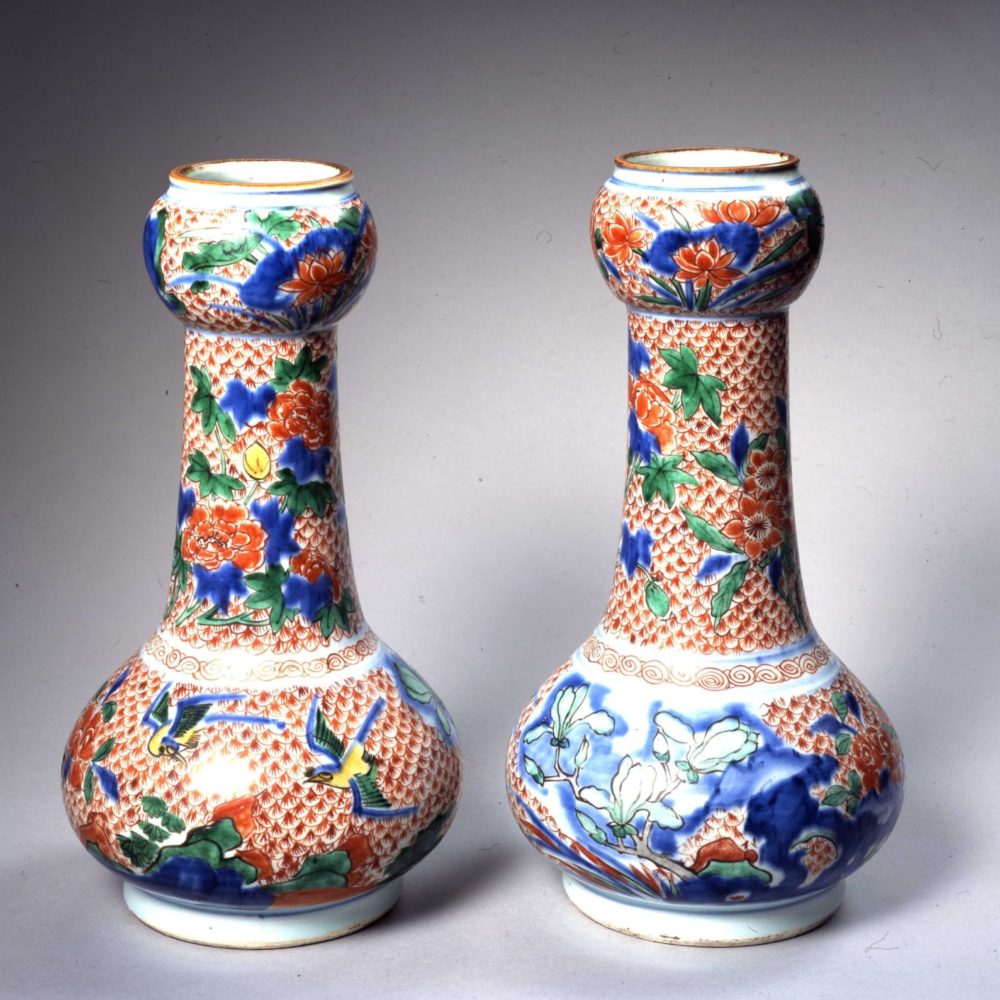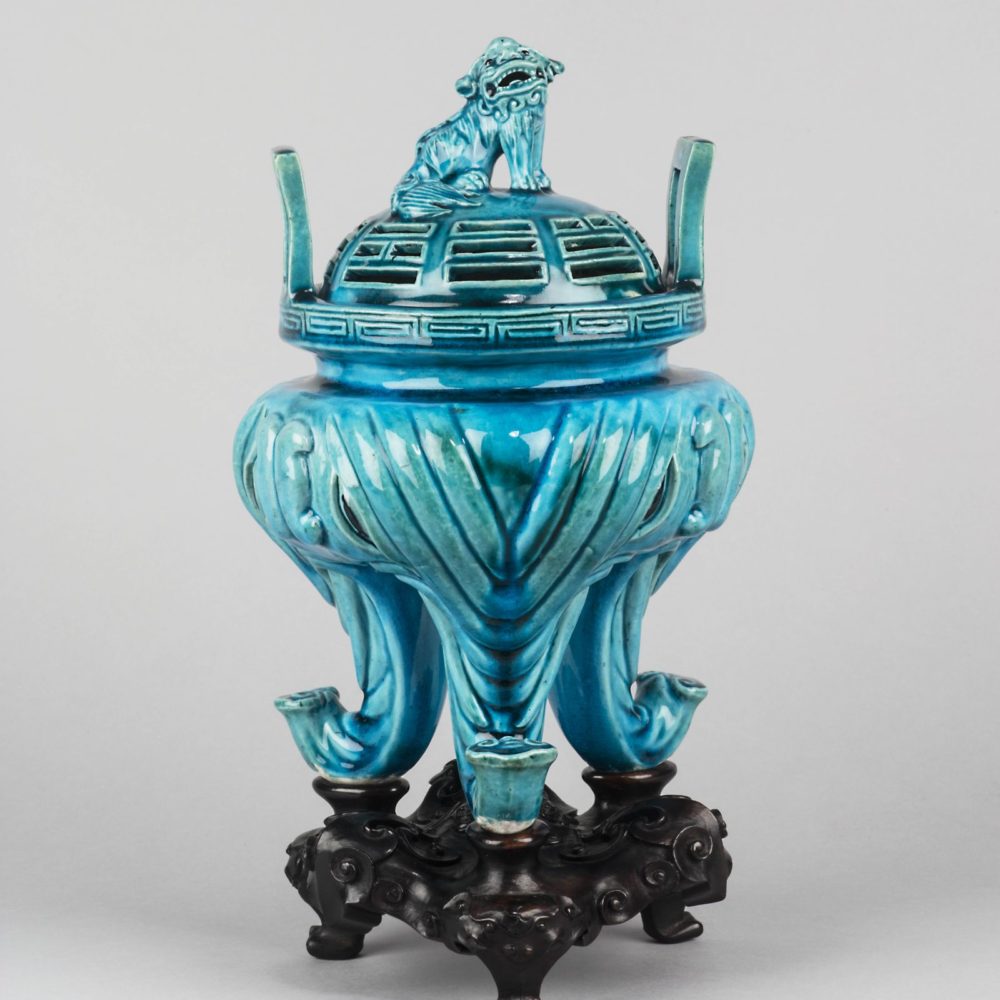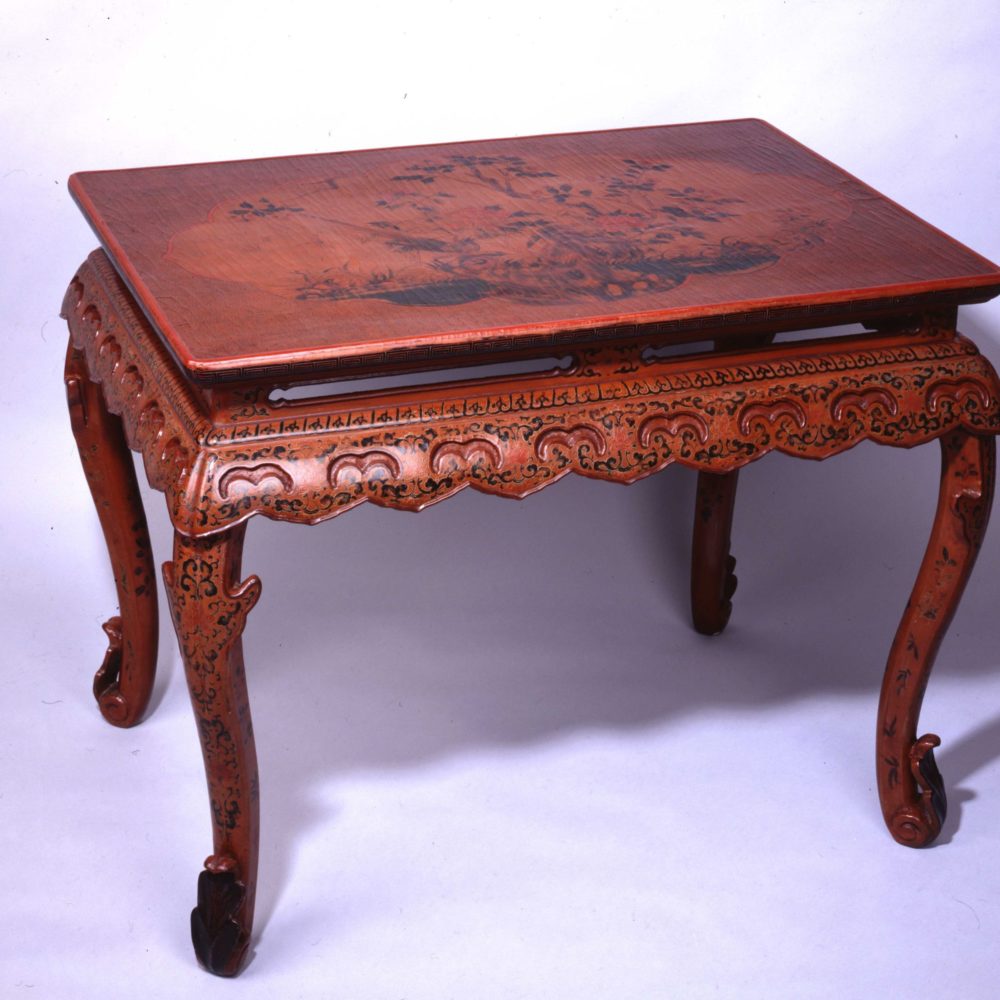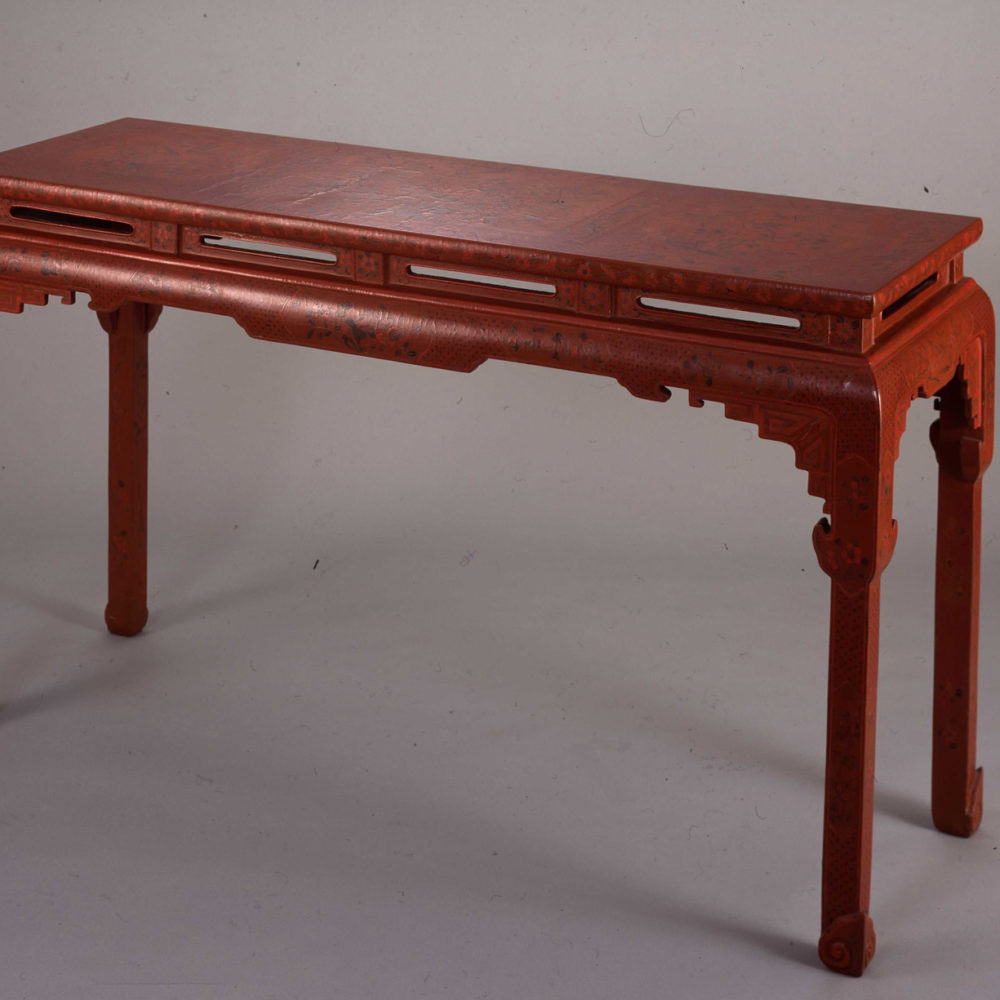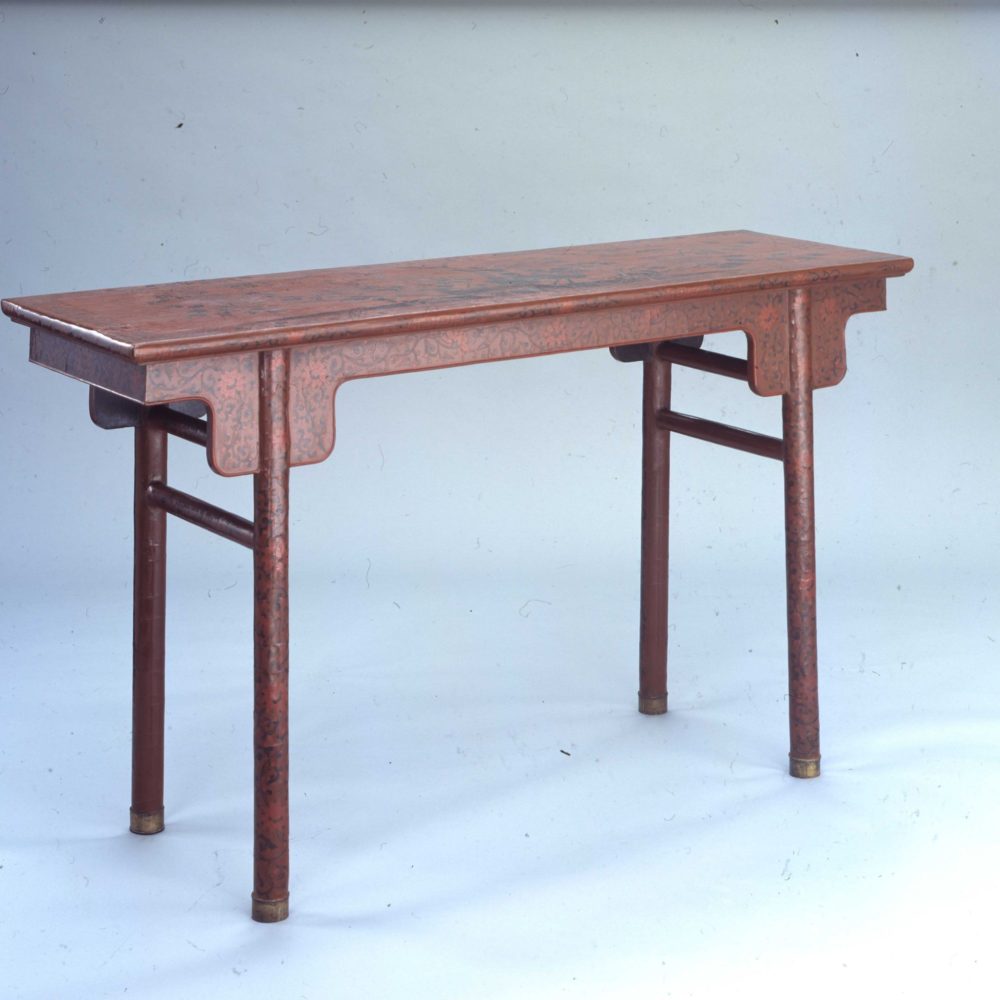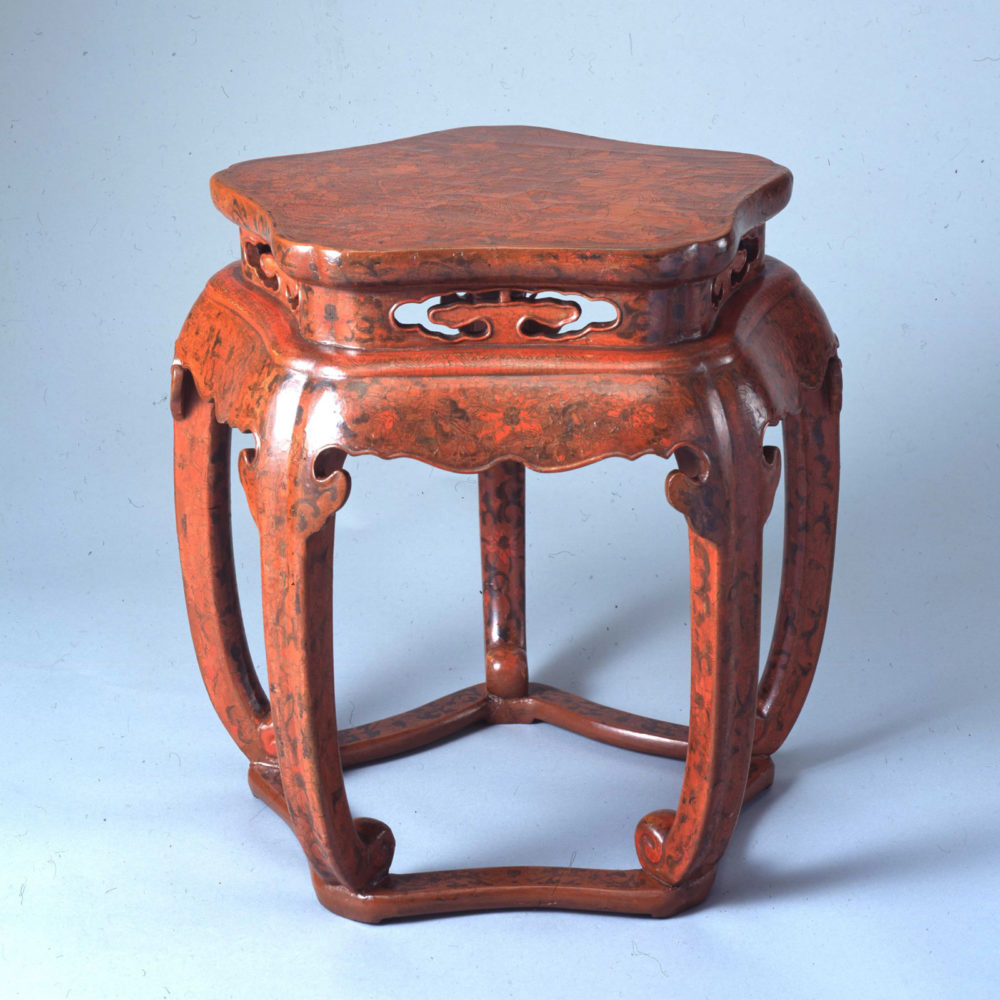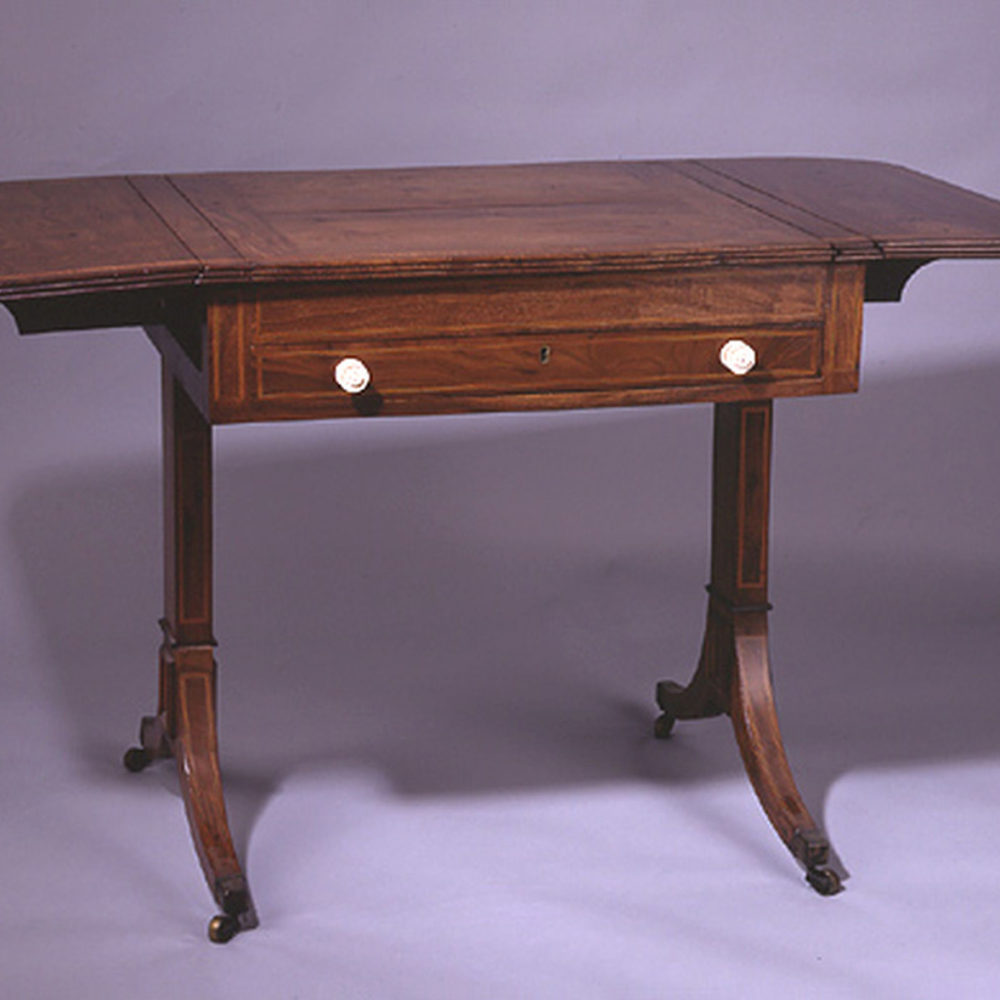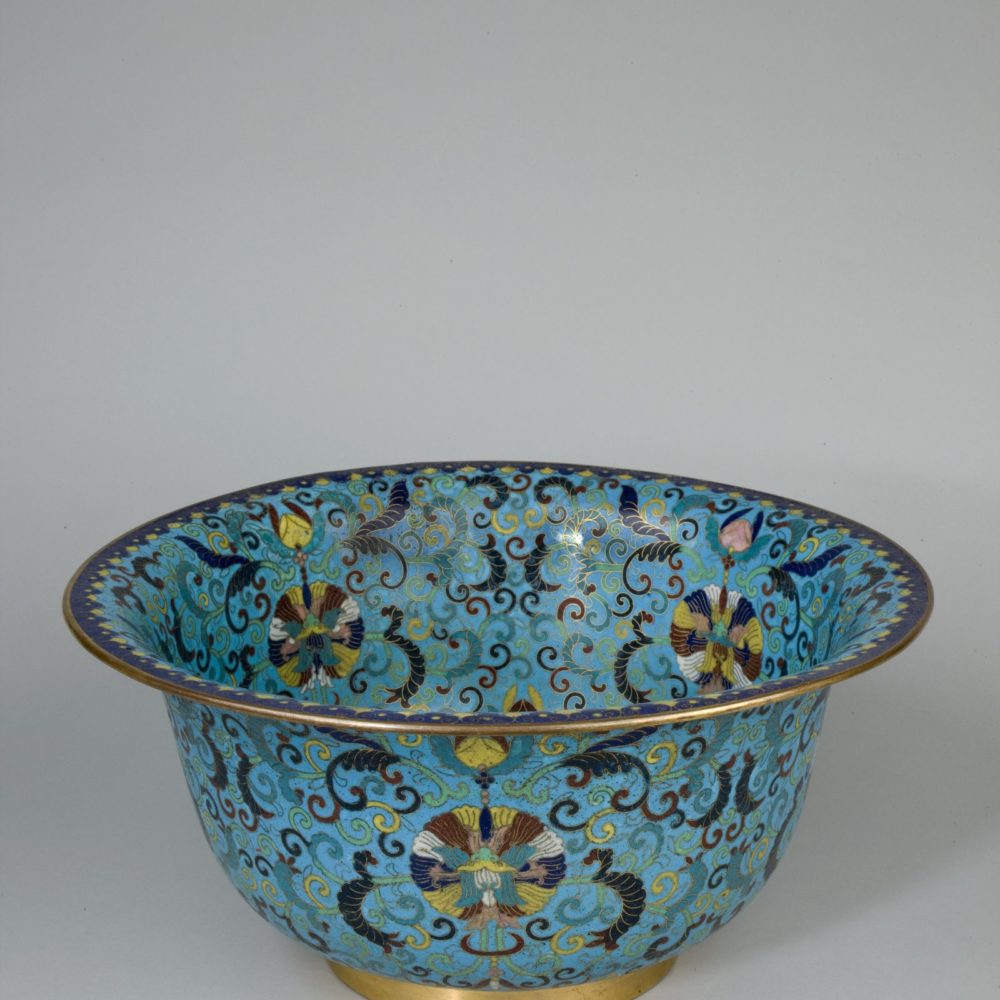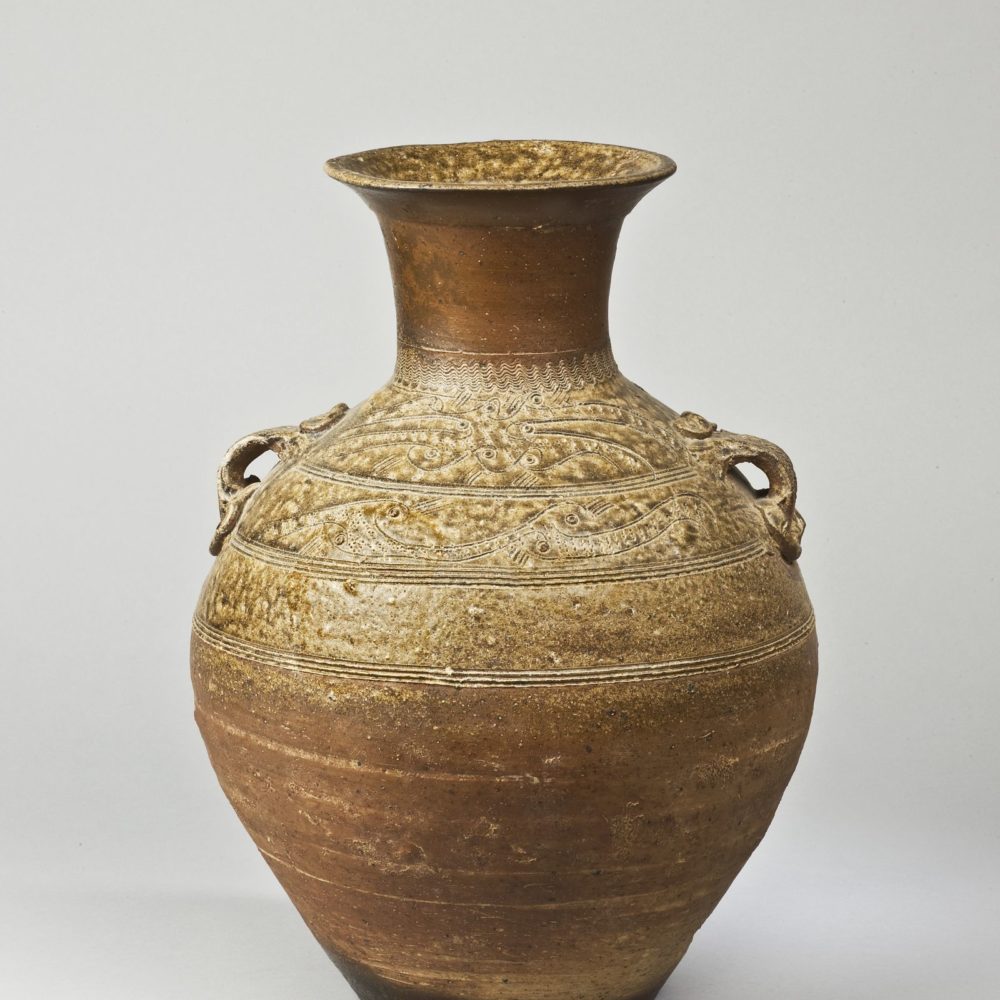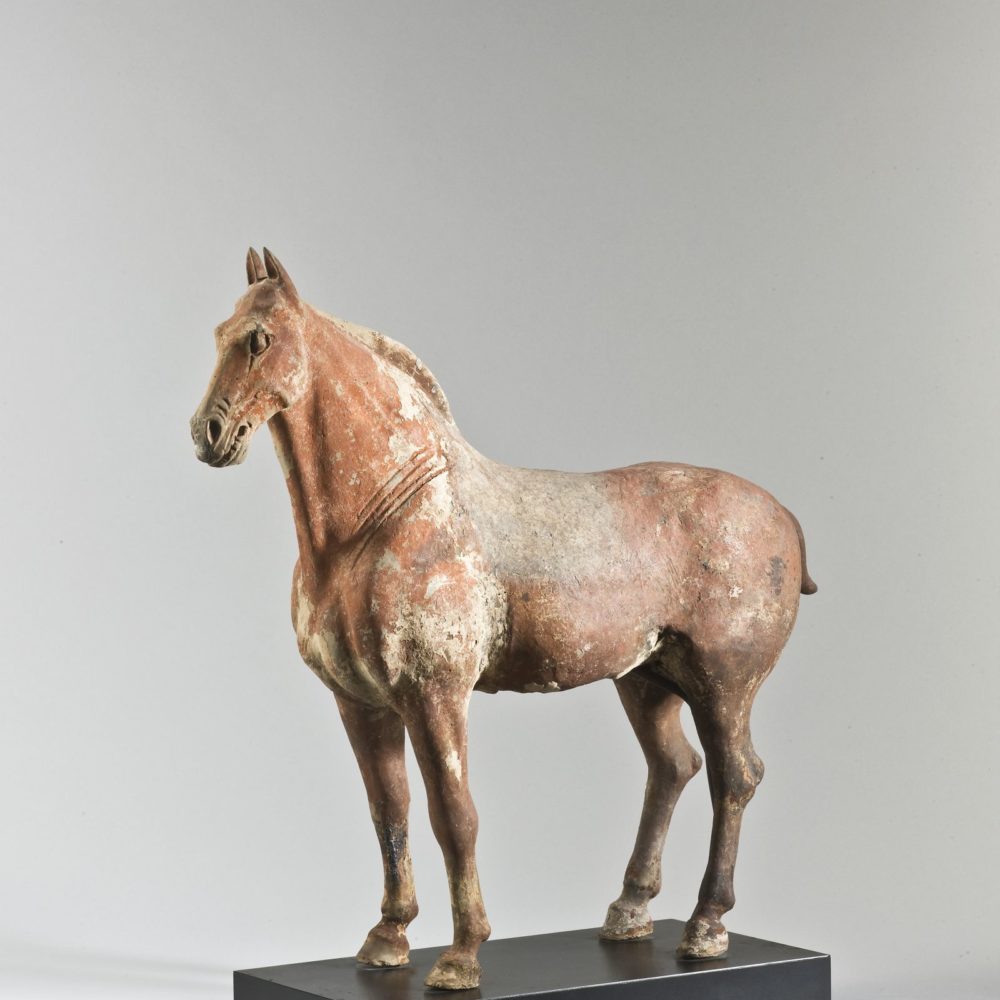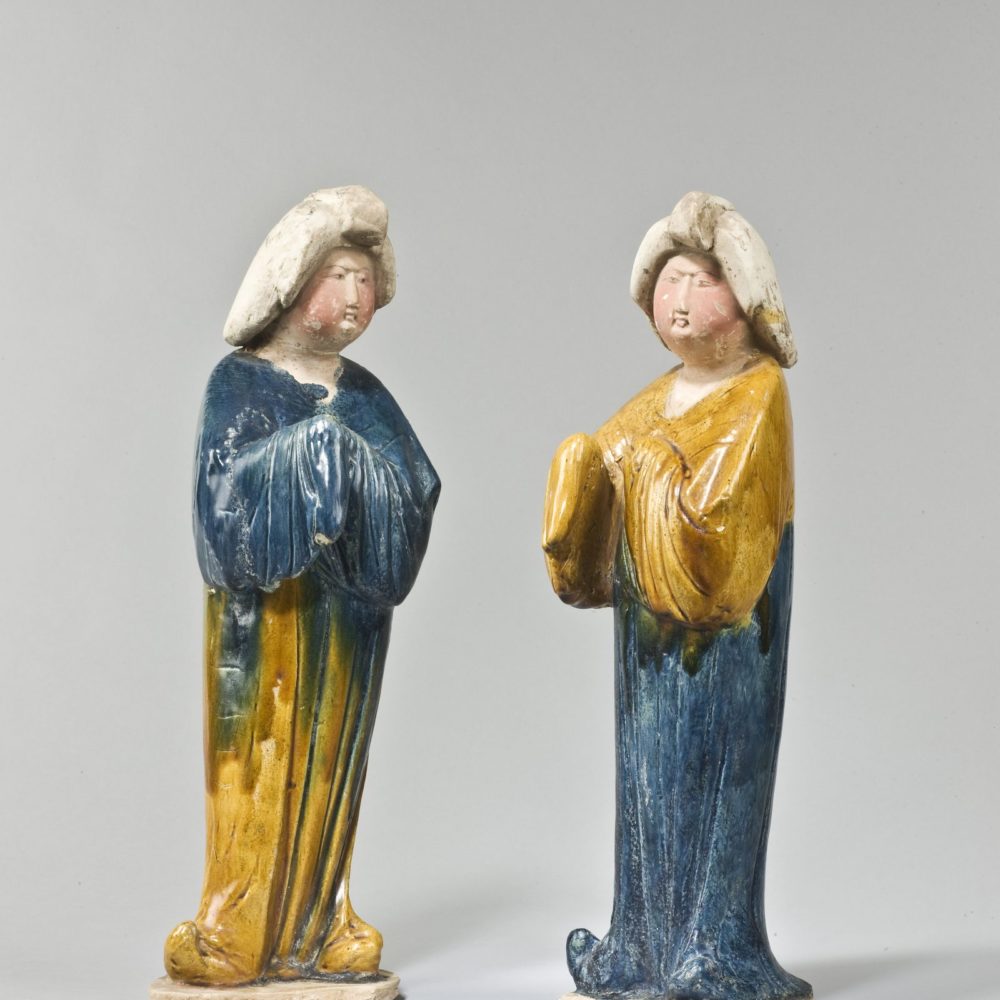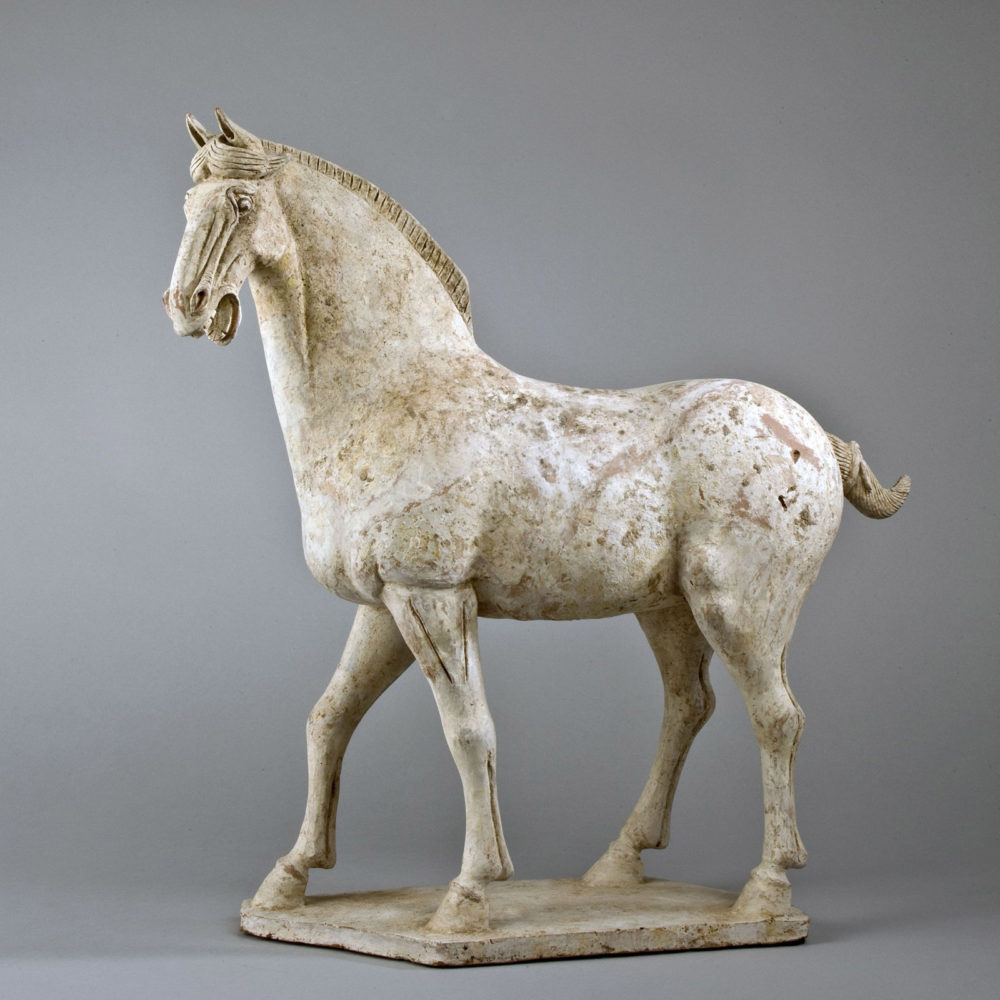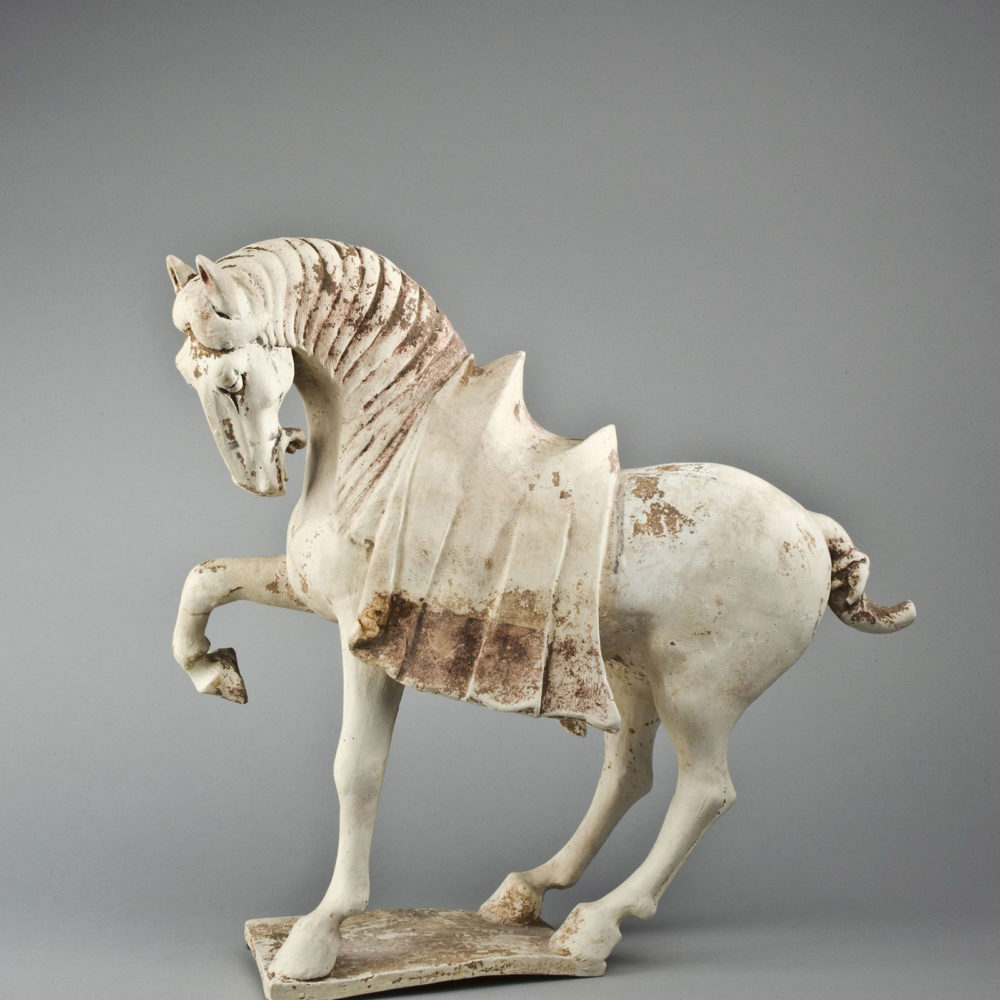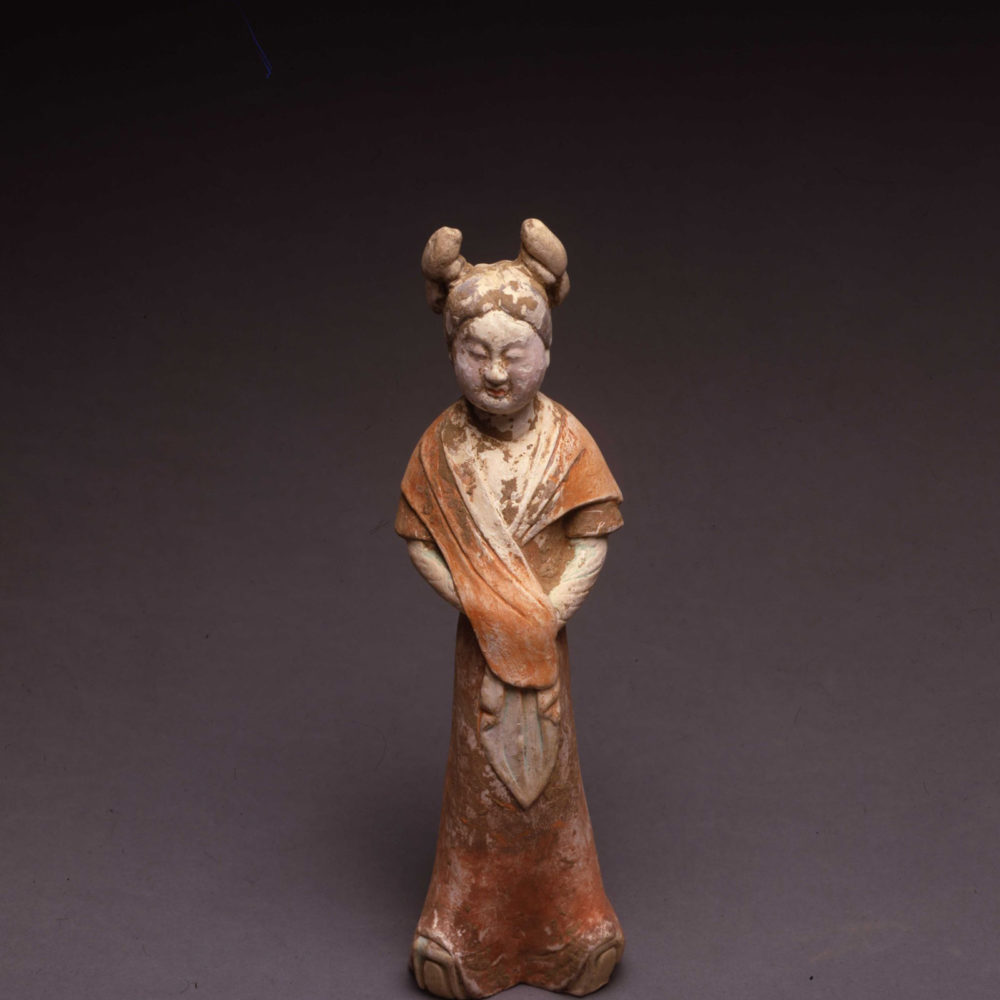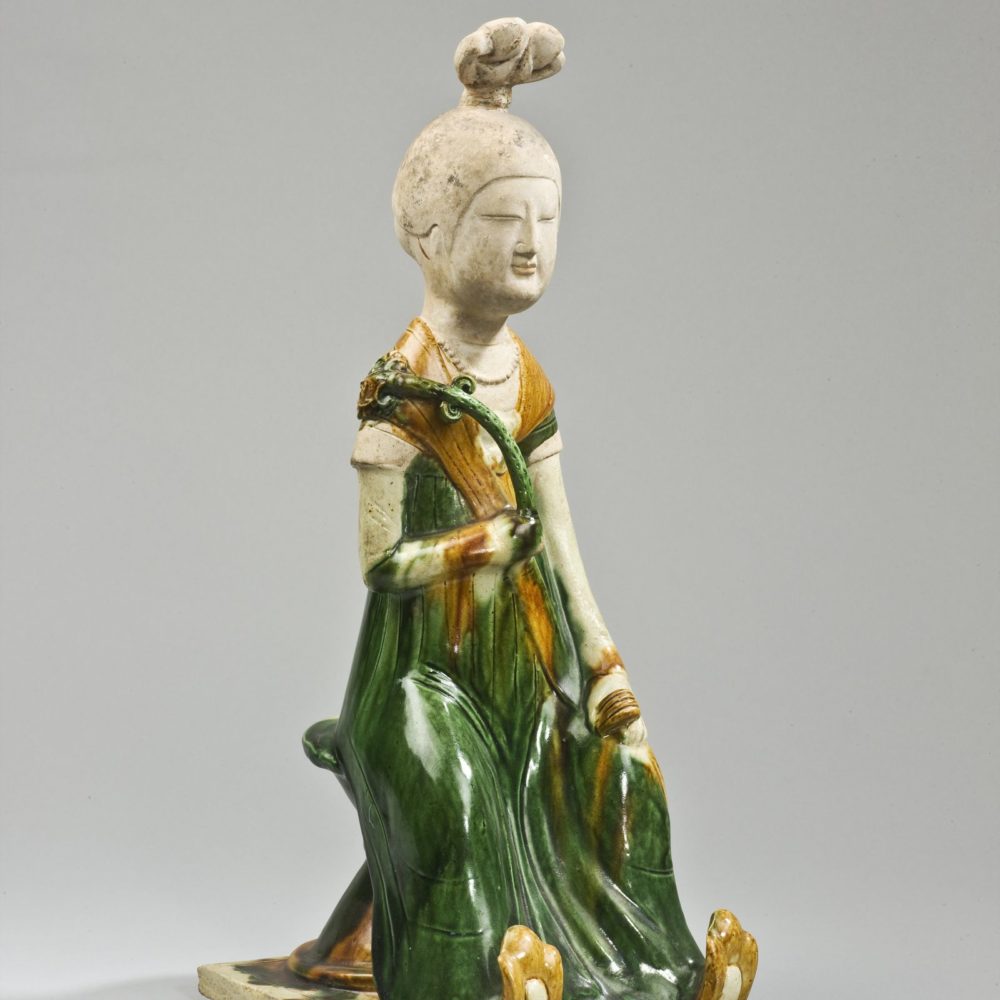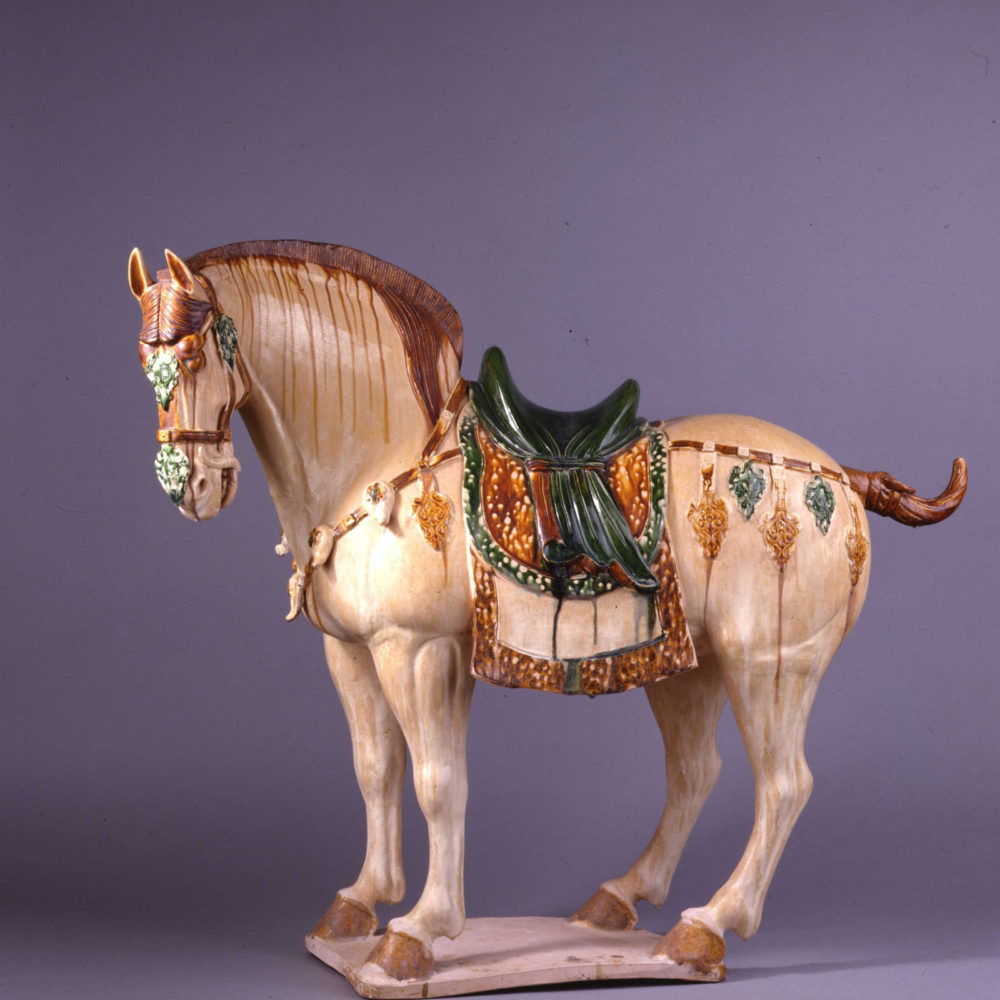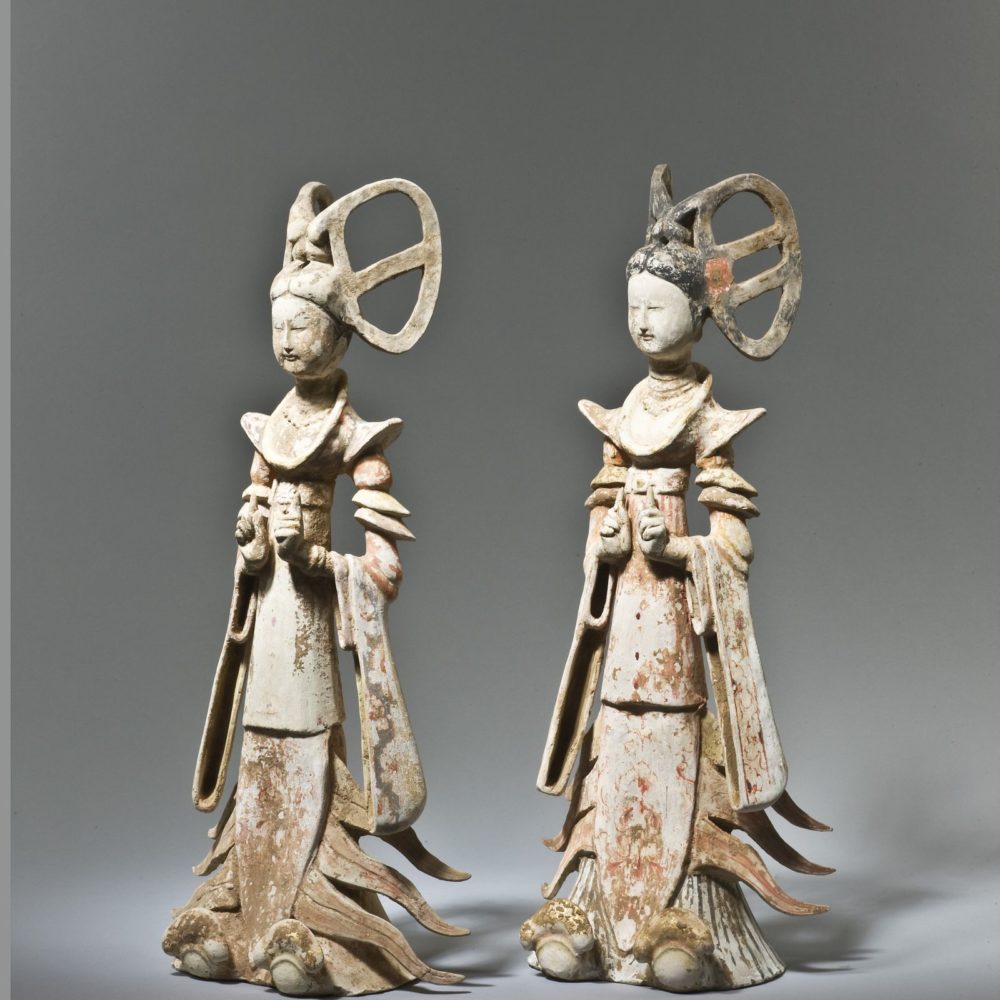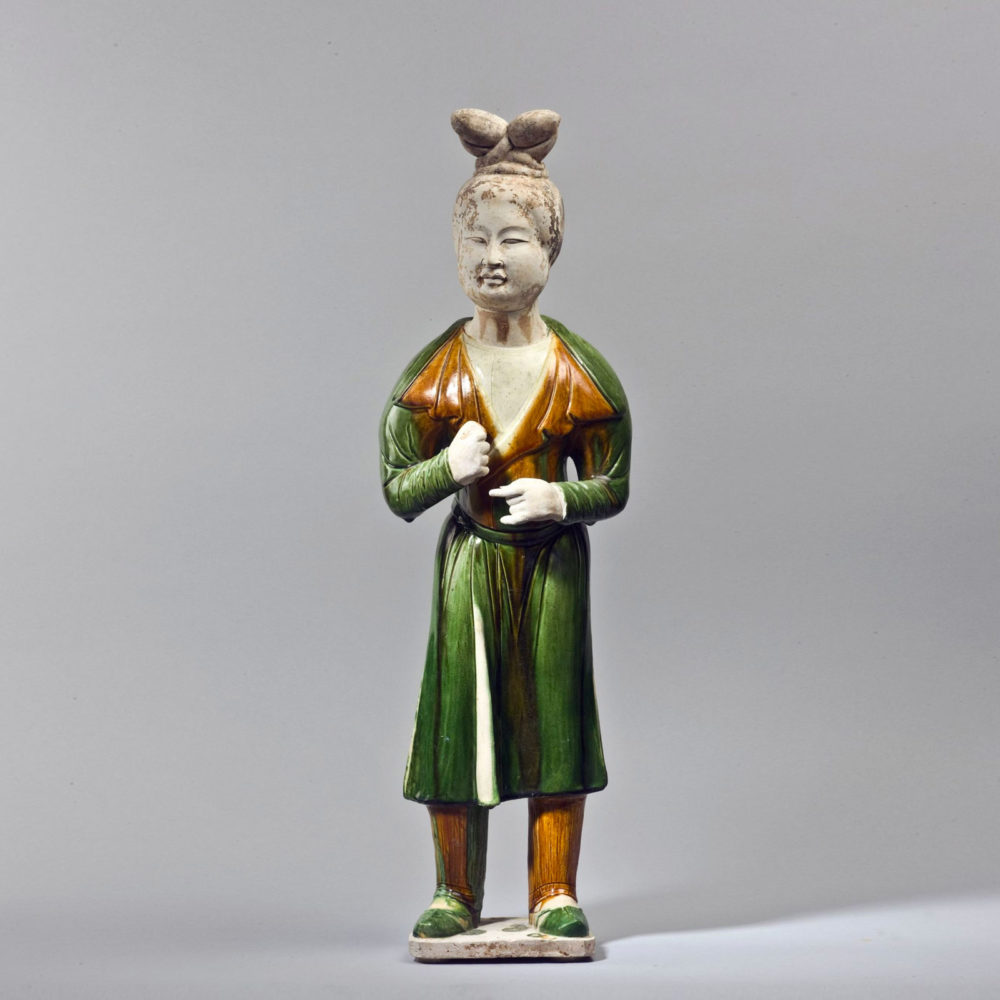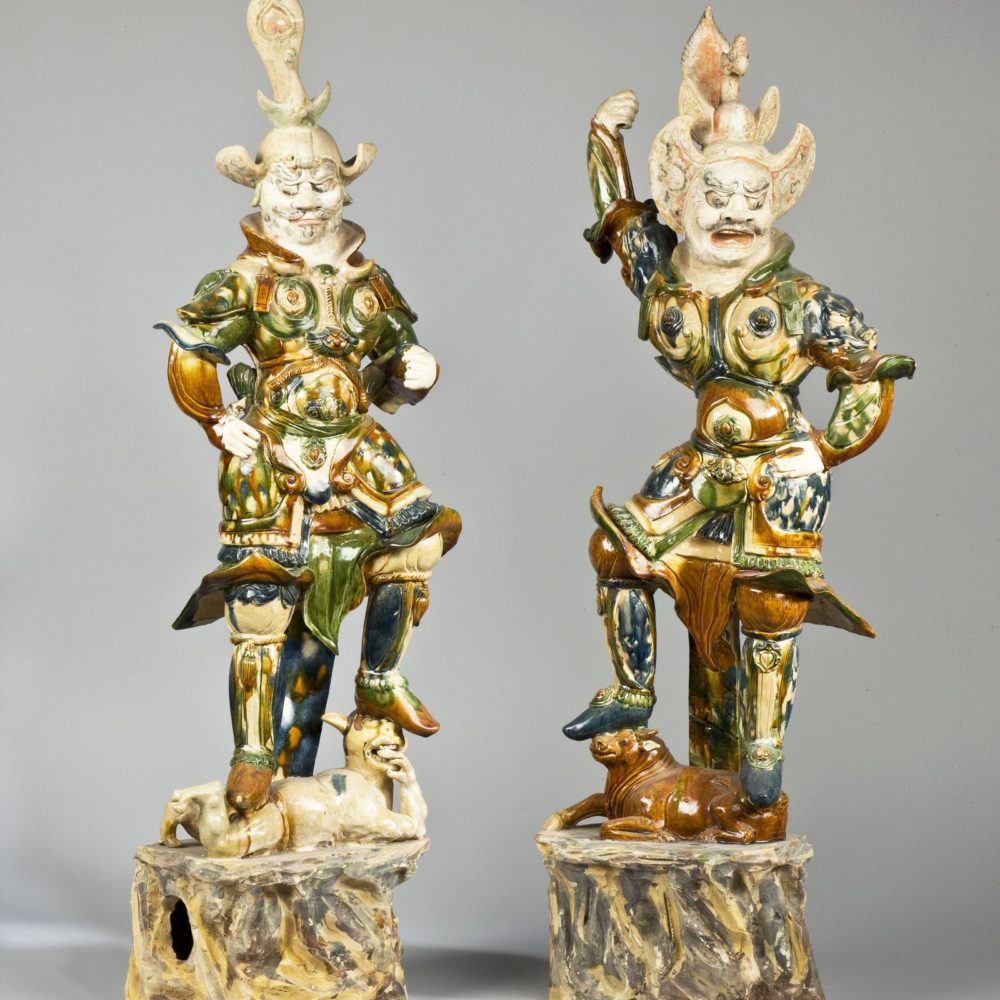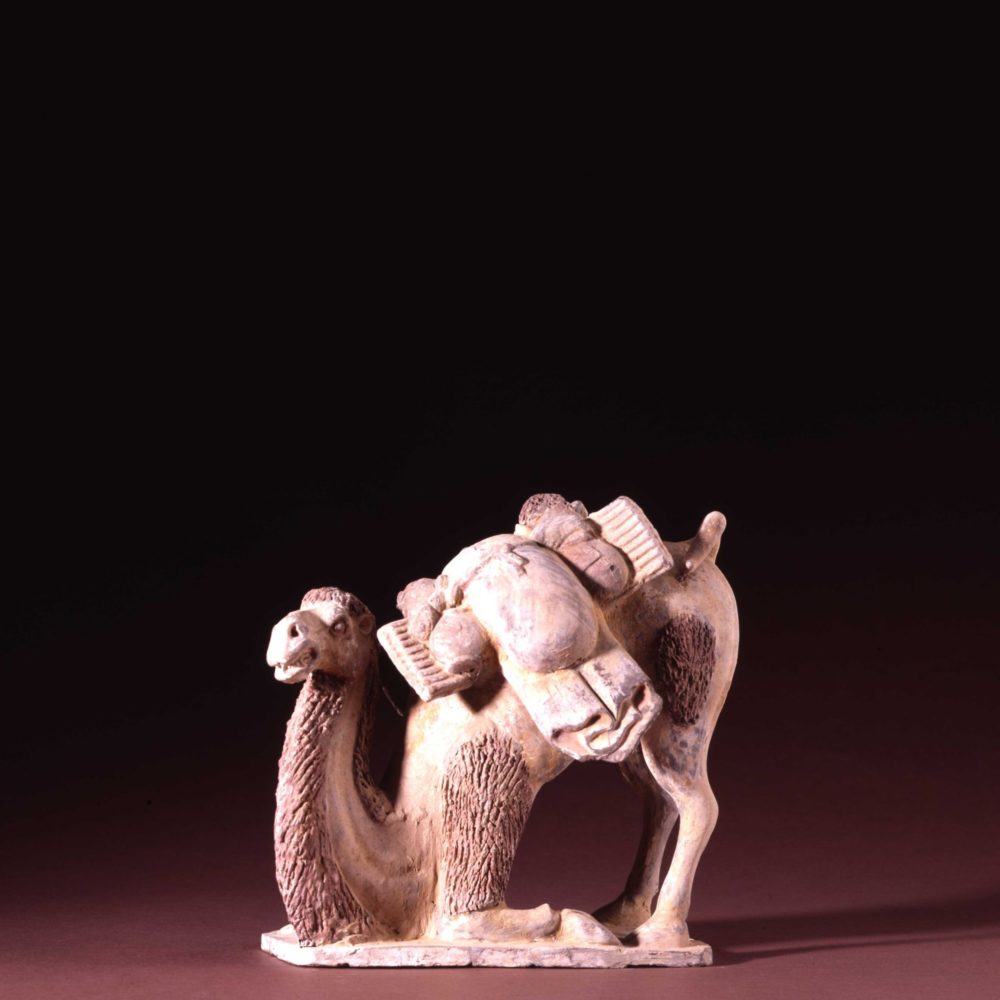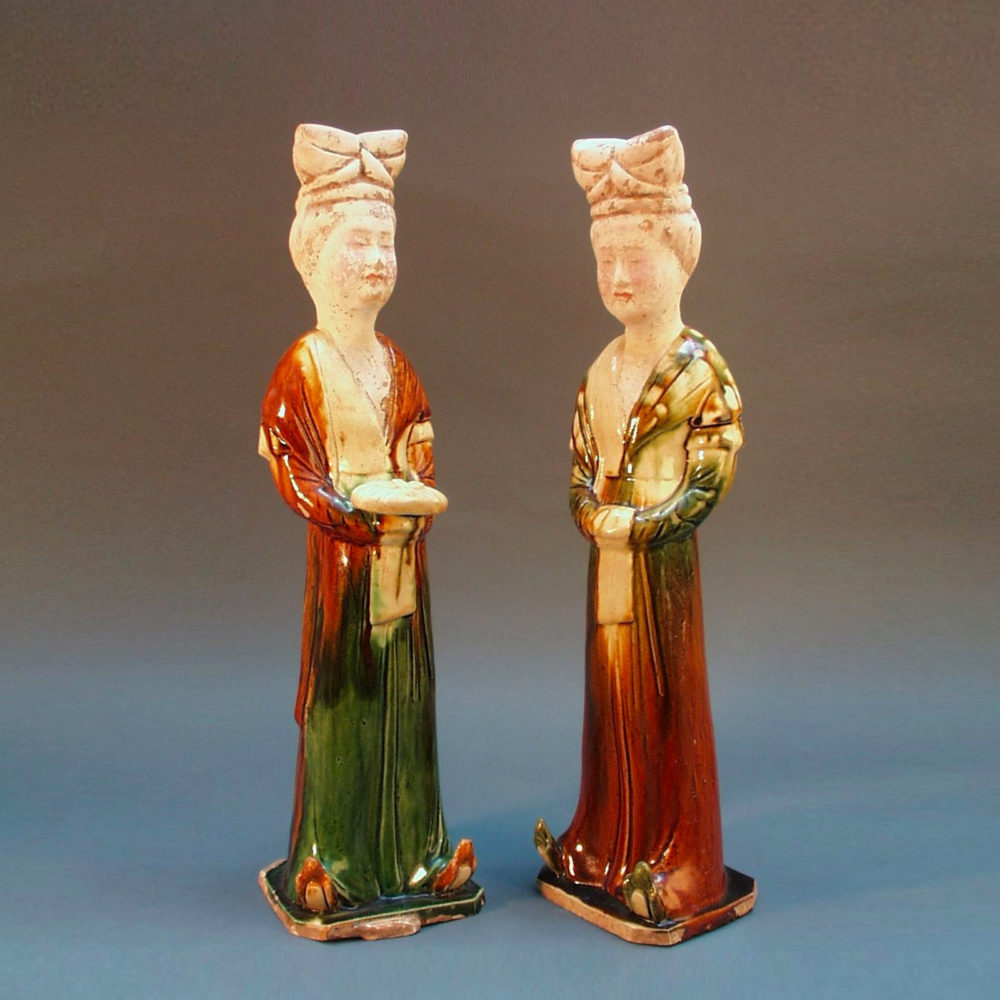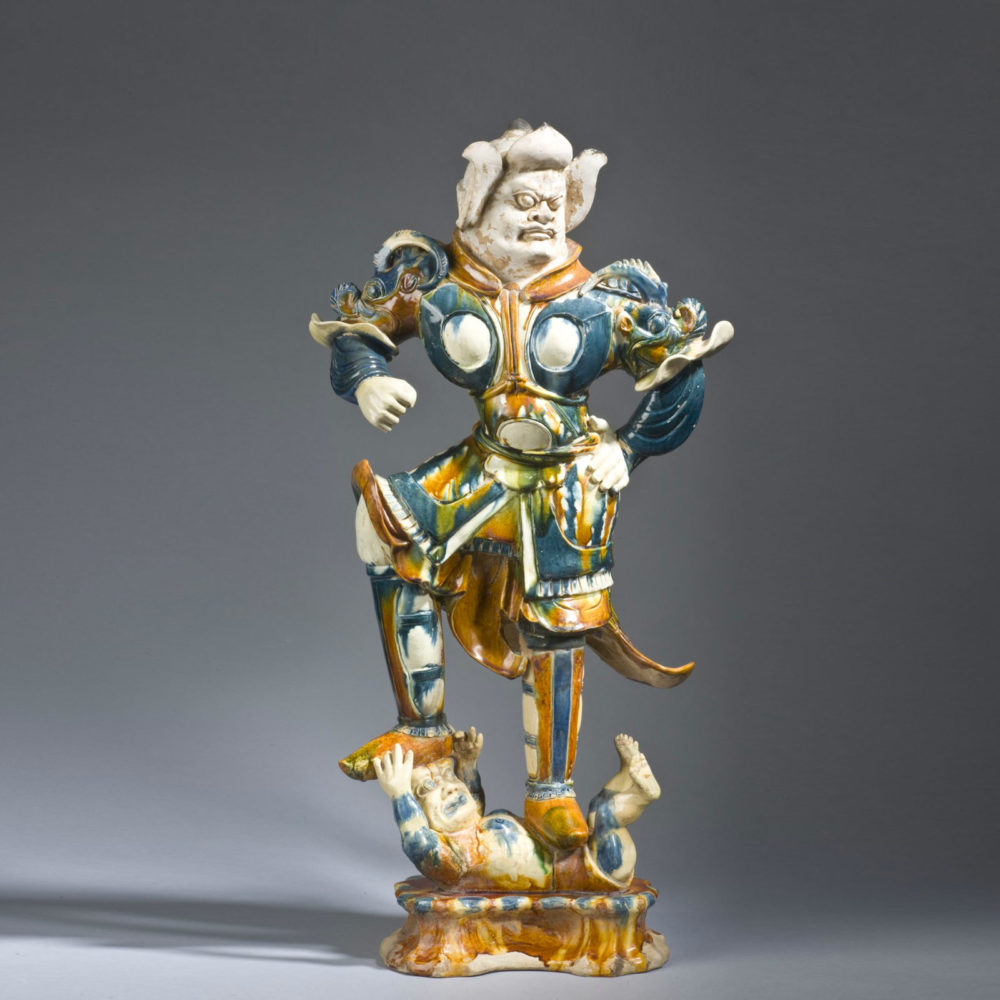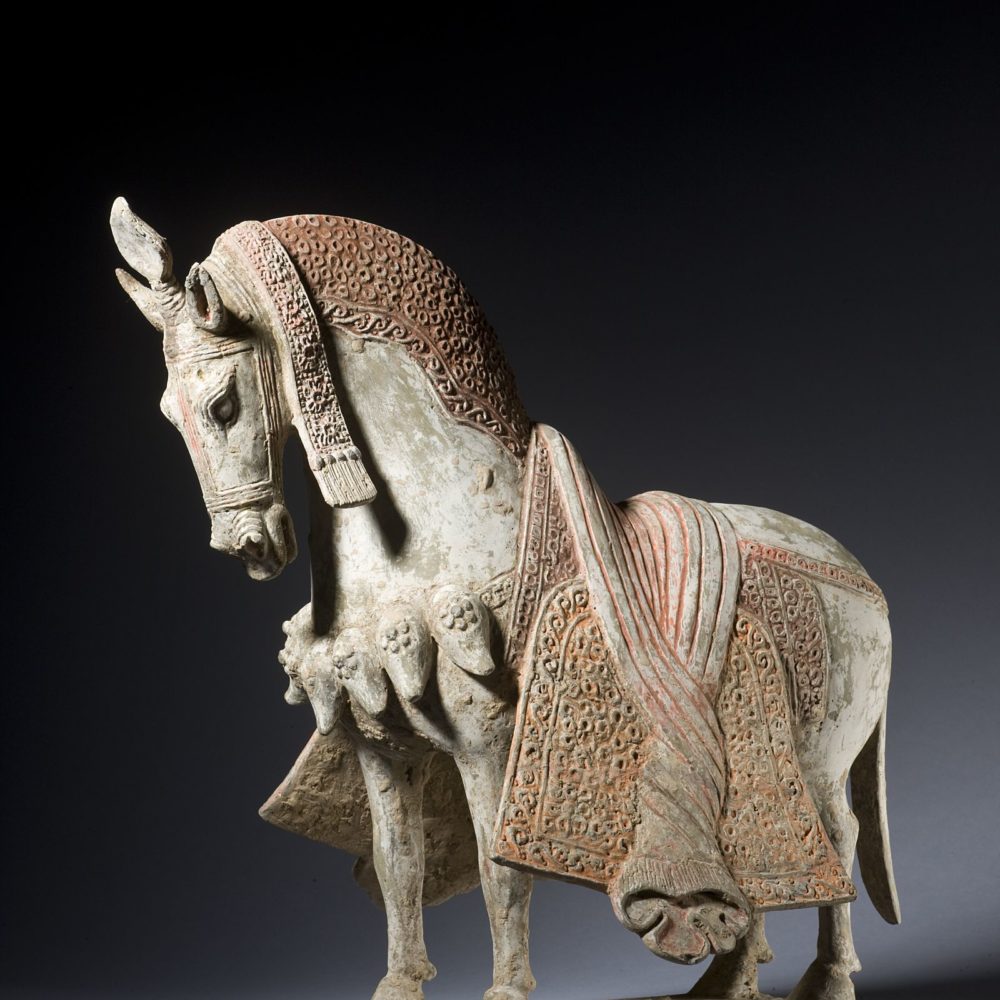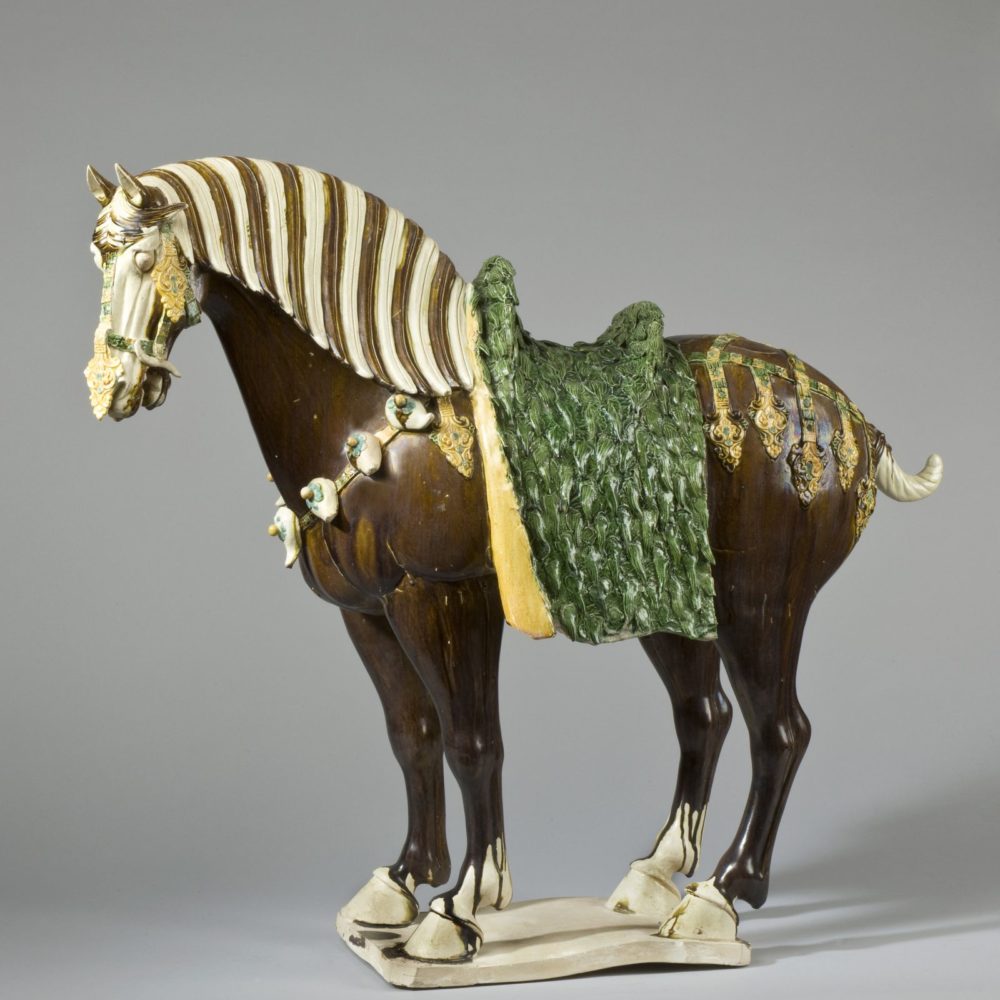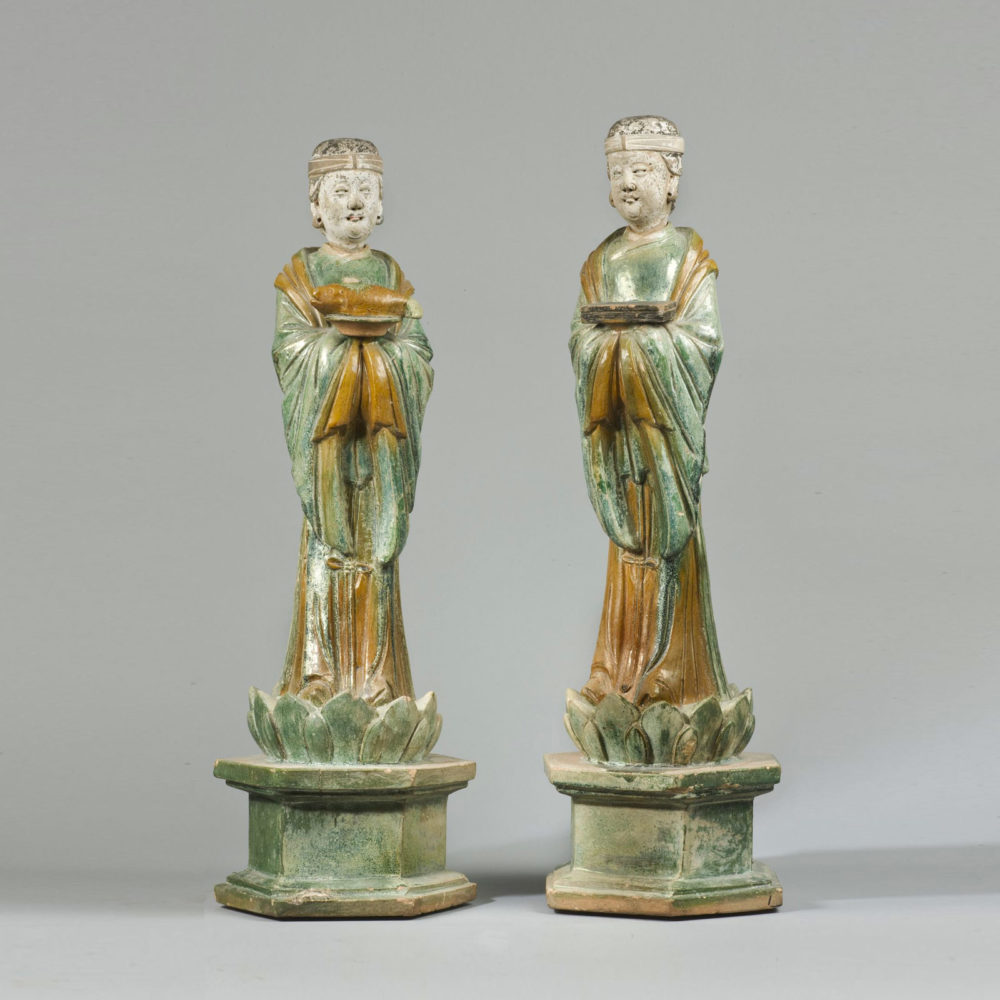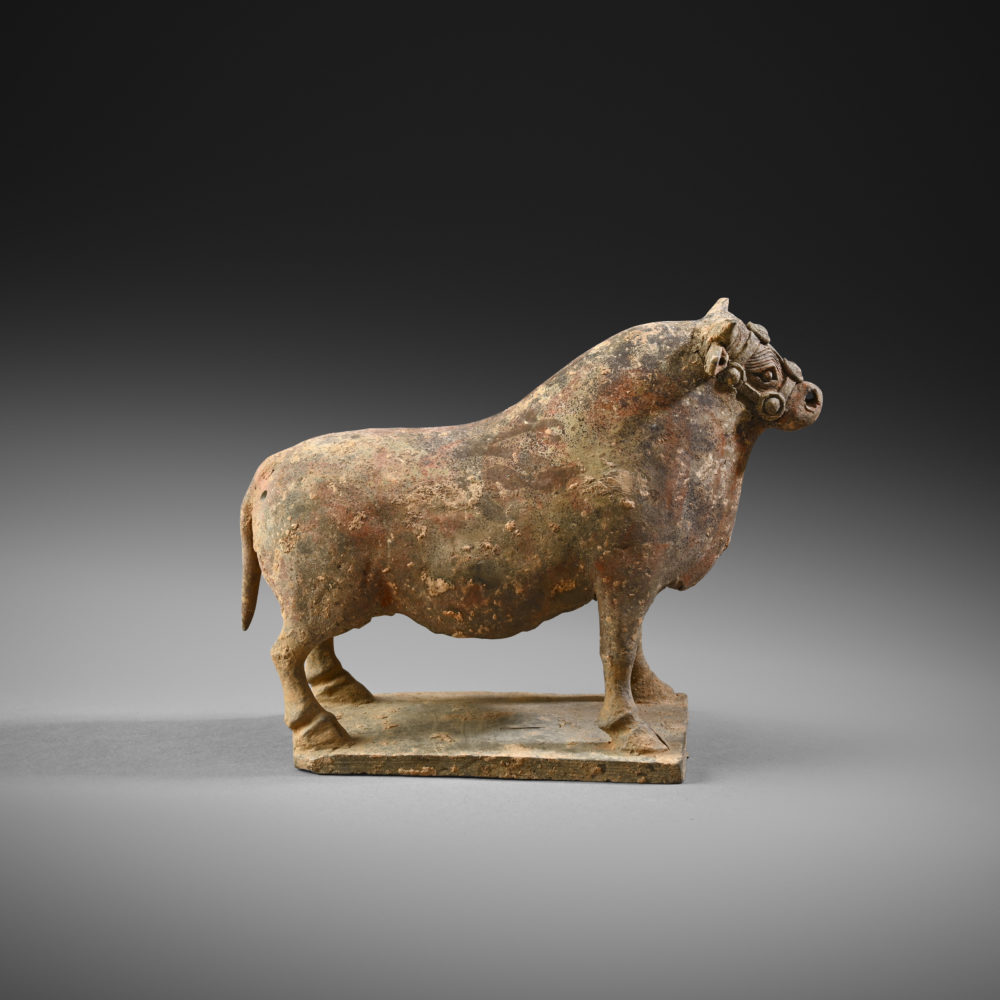A lacquer gilt bronze Laozi riding a buffalo incense burner and cover
老子騎牛漆金銅香蓋爐
Ming dynasty (1368 and 1644), China
明代,中國
Height: 33.5 cm Length: 32 cm
高:33.5釐米 長:32釐米
Naturalistically cast in the form of Laozi seated atop a water buffalo with his right hand carrying the Daodejing scroll resting on the right knee, the sage is depicted with a deep meditative expression, downcast eyes, slight open mouth, finely combed beard and moustache, a prominently bald forehead and crown, his hair tied back into a bun and covered by a hat from which two red straps descent to rest on his shoulders. The immortal is dressed in long loose robes left open at the chest, revealing his under-garment elegantly tried in a bow above his prominent stomach, cascading in folds around the exposed up-turned shoes. The figure is fitted to the back of the hollow buffalo with a pin, the animated strong beast is modelled strenuously moving forward, its head turned sharply to the left with a pair of long curved striated horns, a pair of cocked large ears, focused-staring eyes and a projecting tongue that reaches out to its well pronounced snout. The animal’s dangling and finely incised tail brushes its left rear leg. The covered censer, with Laozi’s mouth and back pierced through with apertures, including one in the cloud shape, bears the patina of a warm dark brown colour, with traces of painted lacquer and gilt.
Laozi is one of the most revered Daoist immortals, he lived during the 6th century BC. and was a contemporary of Confucius. He was credited with the writing of the Daodejing [道德經The Classic of the Way and Its Power]. According to the ancient Chinese historian Sima Qian (145-86 BD), Laozi grew weary of the moral decay and noted the kingdom’s decline, he ventured west on a water buffalo to live as a hermit in the unsettled frontier at the age of 80 when he was asked by the keeper of the Hangu Mountain pass to write down his teachings.
Similar Examples
A closely related bronze incense burner, cast in the form of Laozi riding a buffalo and inscribed with a cyclical date corresponding to 1629 or 1689, was included in the exhibition Between Heaven and Earth. Secular and Divine Figural Images in Chinese Paintings and Objects, Sydney L. Moss, London, 1988, cat. no. 38. Also see an example from ‘Chinese Incense Burners: Collection of Steven Hung and Lindy Chern’, National Museum of History, 2000, Taipei City, figure 171, p.204.
See a Chinese painting dated to the Ming dynasty depicting ‘Laozi Riding an Ox’ by Zhang Lu (1464-1538), National Palace Museum Collection, Taipei.



